- Branches of Biology
- Importance of Biology
- Domain Archaea
- Domain Eukarya
- Biological Organization
- Biological Species Concept
- Biological Weathering
- Cellular Organization
- Cellular Respiration
- Types of Plants
- Plant Cells Vs. Animal Cells
- Prokaryotic Cells Vs. Eukaryotic Cells
- Amphibians Vs. Reptiles
- Anatomy Vs. Physiology
- Diffusion vs. Osmosis
- Mitosis Vs. Meiosis
- Chromosome Vs. Chromatid
- History of Biology
- Biology News

- Pros and Cons

12 Pros and Cons of Genetic Testing
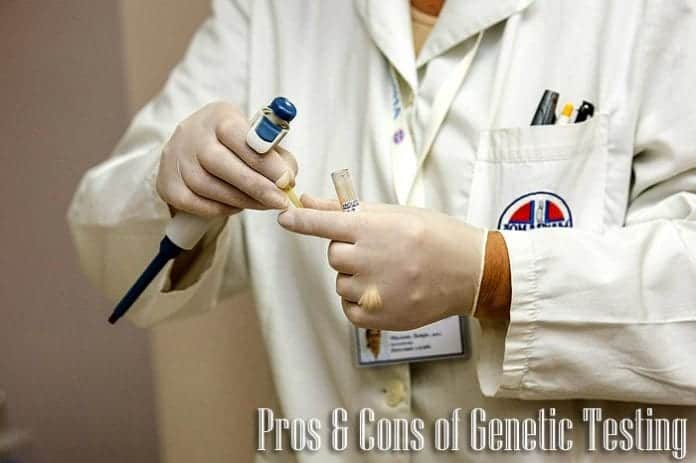
Pros and Cons of Genetic Testing : The human body is composed of millions of cells , which are considered as the “basic units of life”. Inside each cell lies the genetic material or the DNA (Deoxyribonucleic Acid).
Short sections of DNA are called together as the gene. The gene is also dubbed as the “basic unit of heredity” as it contains the information and instructions that dictate how the body should develop and function. Also, the gene is important in the expression of inheritable characters and traits.
- TOP-SELLING CONSUMER DNA TEST: From your origins in over 2,600 global regions to the most connections to living relatives, no other DNA test kit delivers an experience as unique and interactive as AncestryDNA
Previously we’ve seen disadvantages of genetically modified foods and genetic engineering pros & cons . In this article, we’ll explore the pros and cons of genetic testing .
What Is Actually Genetic Testing?
Genetic testing is a type of health program that involves the identification of any changes in genes, chromosomes , and proteins .
Do you have a family history of acquiring a specific disease? Or are you planning to have a child but afraid that he/she might inherit a trait you wouldn’t want to? Genetic testing is the solution to all of these questions. The results of a genetic test confirm and eliminate the possibility of any suspected genetic disorder. Such results will be highly advantageous for the early treatment and prevention of diseases.
How Is Genetic Testing Done?
There are a lot of types of genetic testing depending on what you want to test. Genetic testing can range from biochemical tests, molecular approach, or simply family history questionnaires. To perform a genetic test, a tissue from any organ that usually develops during pregnancy can be obtained. Examples of such are the placenta, amniotic fluid (pregnant woman’s water), bone marrow, or blood .
Pros and Cons of Genetic Testing
Now we will explore the pros and cons of genetic testing. First, let’s focus on pros.
Advantages of Genetic Testing
There are a lot of potential advantages which can arise as a result of genetic testing. The following are some of them.
1. Early prevention and treatment of disease
As with any disease, early diagnosis of the disease will greatly help in faster treatment. The results of genetic testing can also help your healthcare provider in predicting the likelihood and deciding about the management of the disorder. In addition, the results of the test can also help one to learn more about the genetic disease and how it may possibly affect them and their relatives as well.
2. Peace of mind
For some people, finding out that they do not have the gene for a certain disease can become a blessing. They may feel a lot more peace because of the fact that they have not passed any gene abnormality to their children. In addition, because they no longer require the same type of medical treatment as with people who have the gene, the resources can be allotted to those who have the risk of having the disease.
3. Can determine parenthood
Genetic tests can be helpful in establishing evidence for the parenthood of a person for a case like child custody and support. The results of genetic test can also be used as a support for placing a parent’s name on the birth certificate of a child. Depending upon the country/state where you live in, DNA testing can be ordered by the judge for settling disputes in child custody laws.
4. The results can aid decisions in the future
For instance, if there is a low probability of passing a certain unwanted genetic condition, couples can have be assured that they can have children free of the disorder. On the other hand, a positive result may give the couple an idea of deciding not to have children because doing so may result to a high risk of their child developing the condition.
5. Can examine developmental delays in children
Like how it can determine parenthood, being genetically tested can be helpful is determining and interpreting developmental delays in children. Reasons for significant lags in physical, mental, and emotional growth can be determined.
Also if a woman has two or more miscarriages or pregnancy over age 34, genetic testing will be helpful for early diagnosis which can help identify the appropriate treatment options.
Disadvantages & Limitations of Genetic Testing
While the process has great advantages, indeed, several disadvantages that a person who wishes to undergo testing should be aware of. The following are some of them.
1. Physical risks
The physical risks associated with most genetic tests are indeed very small as some tests only require mere blood or tissue samples. However, some tests can be really destructive. As an example, the methods for prenatal testing involves the acquisition of amniotic fluid around the fetus. Such practice can be really dangerous because the mother may suffer from miscarriage.
2. May cause emotional and psychological stress
As alluded to earlier, the results of genetic testing can provide freedom from any uncertainty. However, in some cases, the results of genetic testing may create an emotional trauma for the person who finds out that he/she has a certain disease. It can lead to an increased anxiety to the individual as he might blame himself for possessing a gene that causes the disorder and potentially passing it onto their children.
3. May cause tension among family members
About this, the results of these tests may also create tension among family members when information about a family member is revealed. Having a negative test can cause emotional distress because it gives him/her the feeling of “survivor guilt” from being unaffected by the disease while his/her sibling is at risk.
4. Genetic discrimination may happen
Genetic discrimination is the condition wherein a person feels and gets discriminated due to the fact that he/she possesses a genetic abnormality that increases the chances of him/her developing a certain genetic disorder. And because the results of genetic tests are included in a person’s medical history, the fact that he/she has this abnormality becomes known to employers and other people in the workplace. As a result, people may treat him/her differently.
5. The information is very limited
While it is true that some tests can be very specific about the genetic disorder, these test often cannot tell the severity of the manifestation of the disease. Also, a negative result may not be conclusive because it is not possible for a single test to identify all the genetic changes and abnormalities in a certain disorder. Because of this, additional tests may be necessary. Another thing is that while most genetic disorders can be easily diagnosed using these tests, there are still potentially millions of genetic mutations which are still not understood. Furthermore, treatment strategies are still lacking.
6. Gene products (from tissue samples) are unstable
For instance, one disadvantage of using biochemical test as a genetic test is that proteins from the tissue samples are more unstable that the gene itself. Easy deterioration of samples means a higher chances of inaccuracy in the results. Therefore, they should be properly stored and analyzed immediately after obtaining.
7. Tests can be costly
Basically, the price of having genetic test will depend on various factors including the type of test and the clinic you visit. According to the National Human Genome Research Institute , the average cost of genetic testing in the US can range from less than $100 to $2,000! And as mentioned above, a single test may not be able to determine all genetic abnormalities so additional tests may be advised. The expensive price of genetic testing is only suitable for a small groups of patients because only those who can afford it can be tested.
The Accuracy of Genetic Testing
It is important to note that not all tests have the same predictability. The accuracy of any result would be, of course, depend on whether the disorder is caused by an abnormality of the gene and chromosome or just a mere result of acquisition from the environment.
What’s Next?
According to a study by the Harvard School of Public Health , a large majority of Americans are not into adopting this kind of genetic technology. In fact, only 6 percent of adults said that they had undergone genetic testing. While genetic testing is not compulsory, just like any medical intervention, this technique aims to do good than to harm.
However, some consequences of the process are inevitable. Therefore, to avoid such complications, it is vital to have counseling before and after genetic testing. In this way, individuals are free to choose whether they want to or don’t want to undergo testing. And if needed, they could have extra support.
So if you’re planning to be genetically tested, you might want to ponder this question: Is having genetic testing a mere trend that offers unproven hope, or does it represent the first sign of treatment for affected patients? What do you think?
Cite This Page
Related articles more from author.

Top 10 Genetics News of 2020
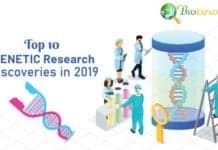
Top 10 BEST Genetics Discoveries of 2019

Top 12 Best Genetics Textbooks
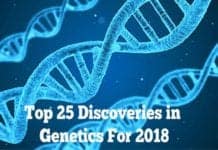
Top 25 Most Recent Genetic Discoveries in 2018

Top 20 Biomass Energy Pros and Cons

Top 34 Gene Therapy Pros and Cons
great sight
LEAVE A REPLY Cancel reply
Save my name, email, and website in this browser for the next time I comment.
By using this form you agree with the storage and handling of your data by this website. *
Recent Posts

The Top 25 Bicolor Flowers: Nature’s Two-Toned Wonders

Top 18 Amazon Rainforest Plants

Top 26 Best Hawaiian Flowers

25 Must-See Colorful Orchids

What Do Peacocks Eat?

World’s Top 15 Poisonous Caterpillars

Marine Biology 101: Ocean Life Explained

25 Reasons That Emphasizes The Importance of Biology

Top 27 Biology-themed Movies

Biology Boomtowns: 10 Best US Cities for Job Opportunities

Uncovering the Fathers of Biology: The Geniuses Who Unveiled Life’s Secrets

25 Mind-Blowing Biology Breakthroughs That Shaped Our World!
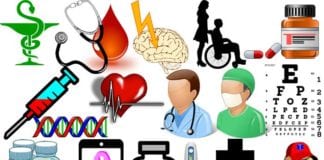
Types of Doctors

40 Different Types of Birds

334 Types of Monkeys
Biology history.

History of Anatomy

History of Biochemistry

History of Biotechnology

History of Botany

History of Cell Biology

History of Ecology

Complete History of Evolution

History of Genetics

History of Immunology

History of Microbiology
- Privacy Policy
- Building for the Future
- Honors & Awards
- Our Global REACH
- Community Health Services
- Arts in Health
- Community Health Planning & Investment
- Life-Saving Donations
- Osher Lifelong Learning Institute (OLLI)
- Sponsorship
- House Officer & Faculty Programs
- Office for Health Equity and Inclusion
- Patient & Community Support
- Professional Development Training
- Students & Pathways
- Workforce Diversity
- Areas to Support
- Ways to Give
- Get Involved
- Fundraising Events
- Resources for Faculty and Staff
- About the Office of Development
- Medicine at Michigan
- Michigan Answers
- Michigan Medicine Podcast Network
- About Community Health Services
- Our Services
- Volunteer & Give
- Get Involved with Friends
- Apply for Funding
- About Housing Bureau for Seniors
- Make a Gift
- Programs and Services
- Senior Living Week
- About Immunization & Health Screening
- PMCH Services
- Regional Alliance for Healthy Schools
- About Volunteer Services
- Current Volunteers
- New Volunteers
- Pre-Approved Volunteers
- Returning Volunteers
- What Is Arts in Health
- Our Mission & History
- Our Team & Partners
- Exhibit or Perform
- Make Art Now
- Watch a Concert Now
- Permanent Art Collection
- Art Purchase
- Community Art
- Gallery Diagrams & Info
- Art Cart Posters
- Bedside Art Program
- Bedside Music Program
- Bedside Story Studio
- Coloring Books
- Comfort Legacy Kits
- Hamsa Hands
- Music Resources
- Nature Resources
- About the Life Sciences Orchestra
- Give to the Life Sciences Orchestra
- Join the Life Sciences Orchestra
- About Community Health Planning and Investment
- Community Health Investments
- Community Health Needs Assessment (CHNA)
- Community Outreach and Engagement Programs
- Donate Blood
- Share Your Story
- Become a Volunteer
- About Osher Lifelong Learning Institute
- Donate Now to OLLI
- OLLI Programs and Activities
- OLLI Volunteer Roles
- Frequently Asked Questions About Sponsorship
- Health Equity and Quality Scholars Program
- Anti-Racism Oversight Committee
- K-12 Programs
- Health Equity Leadership Program
- Health Equity Visiting Clerkship
- Leadership and Enrichment for Academic Diversity (LEAD)
- Undergraduate Programs
- DEI Mini Grants
- DEI Resource Groups
- Medical School Scholarships
- Rogel Cancer Center
- A. Alfred Taubman Medical Research Institute
- Alumni Class Giving
- Anesthesiology
- Ann Arbor Meals on Wheels
- Biological Chemistry
- Biomedical Engineering
- C.S. Mott Children's Hospital
- Cardiac Surgery
- Cell & Developmental Biology
- Chad Carr Pediatric Brain Tumor Center
- Computational Medicine & Bioinformatics
- Congenital Heart Center
- Dermatology
- Eisenberg Family Depression Center
- Elizabeth Weiser Caswell Diabetes Institute
- Emergency Medicine
- Family Medicine
- Fast Forward Medical Innovation
- Forbes Institute for Cancer Discovery
- Frankel Cardiovascular Center (CVC)
- Heinz C. Prechter Bipolar Research Program
- Human Genetics
- Institute for Healthcare Policy & Innovation
- Allergy and Clinical Immunology
- Pulmonary and Critical Care Medicine
- Rheumatology
- Gastroenterology/Hepatology
- General Medicine
- Genetic Medicine
- Geriatric and Palliative Medicine
- Infectious Diseases
- Hematology/Oncology
- Hospital Medicine
- Kellogg Eye Center
- Kresge Hearing Research Institute
- Learning Health Sciences
- Mary H. Weiser Food Allergy Center
- Medical School Student Programs
- Michigan Alzheimer's Disease Center
- Michigan Neuroscience Institute
- Molecular & Integrative Physiology
- Neuroscience Graduate Program
- Neurosurgery
- Obstetrics & Gynecology
- Office of Graduate and Postdoctoral Studies
- Ophthalmology and Visual Sciences
- Orthopaedic Surgery
- Otolaryngology-Head and Neck Surgery
- Pharmacology
- Physical Medicine & Rehabilitation
- Radiation Oncology
- Ronald Weiser Center for Prostate Cancer
- Social Work
- Transplant Center
- Von Voigtlander Women's Hospital
- Annual & Recurring Gifts
- Corporate and Foundation Gifts
- Endowments that Empower
- Estate & Planned Gifts
- In-Kind Gifts
- Memorial or Tribute Gifts
- Sponsorship Opportunities
- Storytellers
- Sponsorship and Ticket Info
- Sponsorships & Foursomes
- 2024 Sponsors
- Sponsorships & Tickets
- Committee Members
- Sponsorship Levels
- Contact Information
- Alumni Stories
- Faculty Stories
- Featured Stories
- Student Stories
- Past Issues
- Share Your Michigan Answer
- Breaking Down Mental Health
- Health Lab Podcast
- Michigan Medicine Presents
- Michigan Medicine Surgery Sessions
- Minding Memory
- Clips for Broadcast Media
- Contact the Media Team
- Patient Privacy and HIPAA
- Research News
Genetic testing, when appropriate, is a powerful tool to gauge a patient’s risk for disease. A Michigan Medicine genetic counselor explains the process.
December 8, 2017 7:00 AM
Author | Kevin Joy
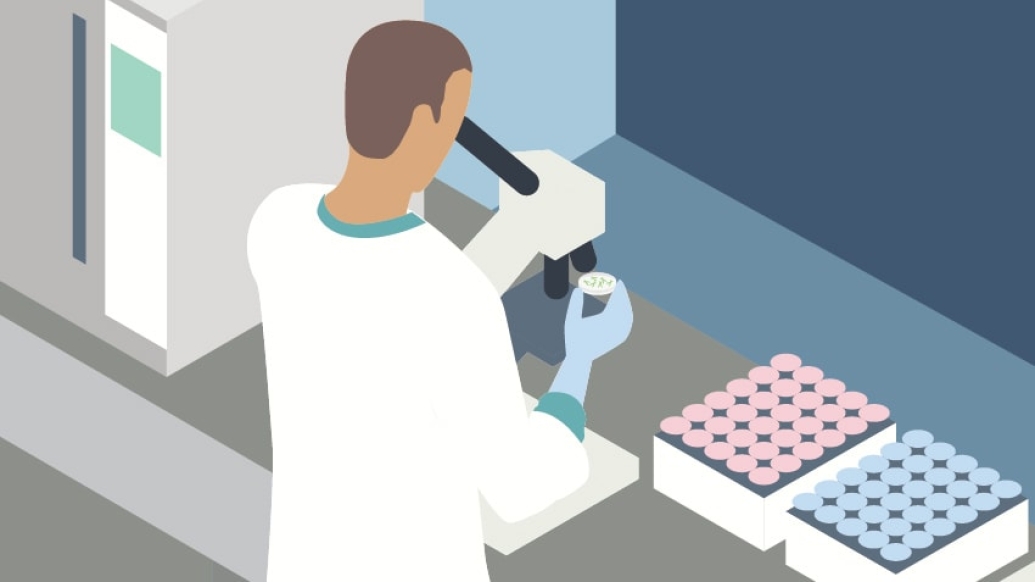
On the surface, the concept seems like a no-brainer: A sample of blood or saliva can offer clues to your body's genetic defects, a road map to predicting future problems ranging from Alzheimer's disease to cancer.
MORE FROM MICHIGAN: Sign up for our weekly newsletter
But put into practice, genetic testing is more nuanced.
The results, after all, might not be what patients want to hear — especially because they could reveal an inherited mutation that puts themselves or their kids at risk. And since each parent contributes 50 percent to a child's DNA, two siblings may have different test results.
"The science is easy to process; the emotional component is not," says Rajani Aatre, M.S., M.Sc., a genetic counselor at the University of Michigan Frankel Cardiovascular Center .
"Let's say you find out your kid got something because you passed it down. No matter how much you intellectualize it, you can't ever discount that the feeling of responsibility or guilt won't affect you."
Still, she says, there is power in knowledge: It allows recipients to be proactive about their own health — and to help determine if other family members are at risk.
And as awareness of genetic mutations grows , testing mechanisms have become quicker, cheaper and more precise.
"It's just exploded," says Aatre. "The kind of tests we have today weren't even possible 20 years ago."
But the decision to get a test, she notes, shouldn't be made lightly. It's why most people first need a recommendation from their primary care physician.
They'll also meet with a certified genetic counselor to explain the process and the many considerations that come with getting the detailed analysis.
"Most people, once they've understood that, want to do it," says Aatre, who explained some of the pros and cons of genetic testing she discusses with patients:
Pros of genetic testing
It offers insight: With genetic testing, "we're targeting the coding part of the gene that is relevant to your particular disease," Aatre says. That, she notes, involves reading a DNA sequence from start to finish to see if there are any "interruptions/disruptions" — mutations associated with the disease in question — that stop the gene from making normal proteins.
Uncertainty is lessened: Worried about a future ailment? Knowing that a particular mutation is absent can help people ease anxiety about their own health and that of their children. "A big part of genetic testing is trying to determine who else in the family is at risk ," Aatre says. "But you're also providing reassurance."
SEE ALSO: Collecting a Family's Cancer History: What You Should Ask
You can take action: A clearer portrait of risk can guide medical care. "Certain genes are associated with more severe diseases," Aatre says. "Some genes respond to certain medications and treatments better." That, depending on circumstance, might lead to additional diagnostic testing or monitoring, healthful lifestyle shifts or getting family members tested.
Discrimination is (mostly) protected: Genetic testing results will appear on your medical record. That's why several anti-discrimination laws protect recipients, notably the Genetic Information Nondiscrimination Act of 2008, which prohibits employers using that data to hire, fire or promote and health insurance companies from using it as a pre-existing condition. Notable exceptions: Disability, life and long-term care insurance could be affected.
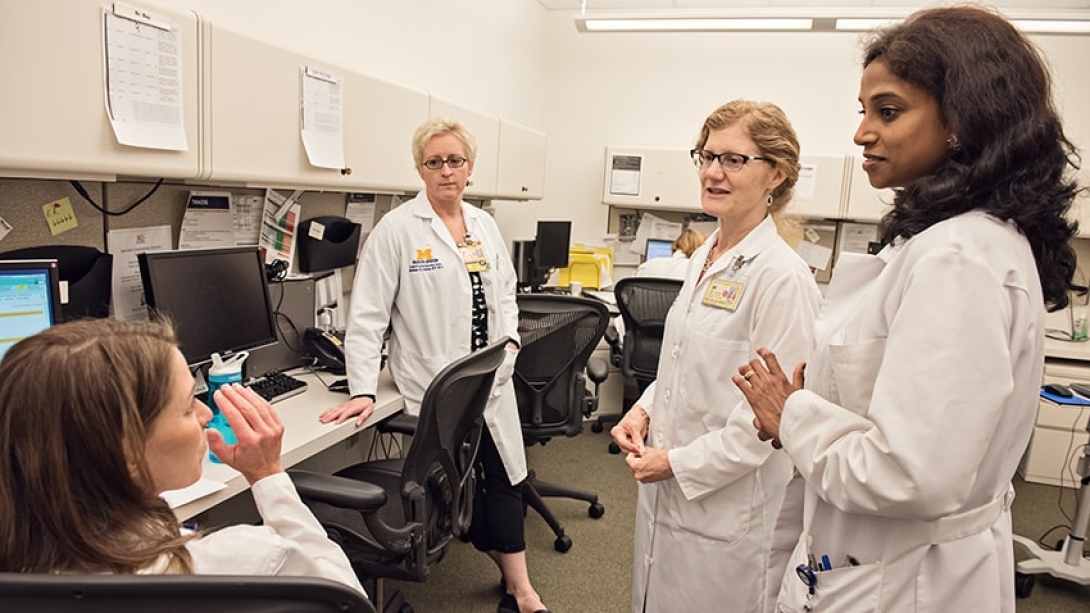
Cons of genetic testing
Not everyone is eligible: To get tested, a loved one must already have been affected by a disease or disorder — and been genetically tested, too. The reason? "You need to know what to go after," Aatre says. Everyone's body has seven to 10 nonworking/altered genes, she notes, so family and clinical history must dictate when and where to focus attention (and avoid unnecessary anxiety).
SEE ALSO: Should Young People Get a Colon Cancer Screening? It Depends on Their Risk
It isn't a full-body review: Testing is targeted: "When someone walks in my door, I'm not going to screen them for everything on the planet," Aatre says. "Without clear markers, you're opening Pandora's box." A patient whose parent was tested for a genetic heart condition , for example, wouldn't be a candidate for BRCA 1 or 2 testing to determine breast cancer risk.
Testing can be costly: The price of genetic testing ranges from a few hundred dollars to several thousand dollars. "They're cheaper than they used to be but are still very expensive," Aatre says. Still, insurance typically covers such tests for newborns and expectant mothers, as well as patients with a documented personal or family history or a physician's recommendation.
Results may trigger emotions: Finding out that a gene mutation is absent can offer a deep sense of relief. And others who find out that they are carriers can take comfort in having more control. Still, says Aatre: "This crystal ball, all of a sudden, can pop in front of you." That may spark deep feelings of guilt (regardless of findings) or difficult decisions.
For more information or to make an appointment for genetic counseling or testing at the Frankel Cardiovascular Center, call 888-287-1082 .

Explore a variety of health care news & stories by visiting the Health Lab home page for more articles.

Department of Communication at Michigan Medicine
[email protected]
734-764-2220
Want top health & research news weekly? Sign up for Health Lab’s newsletters today!

We transform lives through bold discovery, compassionate care and innovative education.
- Diversity, Equity & Inclusion
- News & Stories
- Find a Doctor
- Conditions & Treatments
- Patient & Visitor Guide
- Patient Portal
- Clinical Trials
- Research Labs
- Research Centers
- Cores and Resources
- Programs & Admissions
- Our Community
- Departments, Centers & Offices
- About the Medical School
Global Footer Secondary Navigation
Genetic Testing: Advantages and Disadvantages Essay
- To find inspiration for your paper and overcome writer’s block
- As a source of information (ensure proper referencing)
- As a template for you assignment
The issue of genetic testing is a highly controversial one, as its advantages and disadvantages present various dilemmas. It is still not clear if genetic testing should or should not become a common procedure that all people undergo regularly. I believe that it is an extremely personal decision to make. There are certain limitations and concerns that a diagnosed person can face, especially when they are diagnosed with untreatable and lethal disorders (Norrgard, 2008). Knowing about conditions like that may significantly decrease the quality of life and even lead to depression and anxiety.
At the same time, I acknowledge all the benefits that genetic testing can bring in terms of diagnosing a wide range of diseases and conditions. Fearing that they might discover hereditary predispositions to some untreatable diseases, many people choose not to get tested. However, I believe that deep inside, they still think about it and have concerns; I would if my family had a history of genetic conditions. That is why some people may even feel relieved when they undergo testing and have to face difficult results. At least they can know for sure that they are predisposed to certain conditions and focus on ways to improve their lives (Kurian et al., 2019). After all, genes are believed to be malleable; a positive approach, holistic nutritional program, and avoiding environmental toxins will not harm any person whose genetic testing results show a predisposition to certain diseases.
In the end, I do not think there is a universal answer to this question. Each person’s choice has to be authentic because they are the ones who will have to live their lives with this knowledge. I do believe, though, that scientific and health communities might focus more on raising awareness about genome sequencing, with particular reference to conditions that can be caught in the early stages, such as different types of cancer.
Kurian, A. W., Ward, K. C., Howlader, N., Deapen, D., Hamilton, A. S., Mariotto, A., Miller, D., Penberthy, L. S., & Katz, S. J. (2019). Genetic testing and results in a population-based cohort of breast cancer patients and ovarian cancer patients . Journal of Clinical Oncology , 37 (15), 1305-1315.
Norrgard, K. (2008). Genetic testing and family planning | Learn science at Scitable . Scitable.
- Discussion of Editing Human Embryos and Adults
- Should Cloning Be 100% Legal or Illegal?
- Next-Generation and Traditional Sequencing Methods
- Infectious Bacterial Identification From DNA Sequencing
- Whole-Genome Sequencing for Identification and Gene Function Prediction of Bacterial Genomes
- Genetic Modification and Cloning
- Gene Modification: Building Baby From the Genes Up
- "Ghost in the Genes" Video Review
- Editing the Genome of Human Embryos: Pros and Cons
- Down Syndrome: Congenital Heart Disease and Prenatal Testing
- Chicago (A-D)
- Chicago (N-B)
IvyPanda. (2022, November 8). Genetic Testing: Advantages and Disadvantages. https://ivypanda.com/essays/genetic-testing-advantages-and-disadvantages/
"Genetic Testing: Advantages and Disadvantages." IvyPanda , 8 Nov. 2022, ivypanda.com/essays/genetic-testing-advantages-and-disadvantages/.
IvyPanda . (2022) 'Genetic Testing: Advantages and Disadvantages'. 8 November.
IvyPanda . 2022. "Genetic Testing: Advantages and Disadvantages." November 8, 2022. https://ivypanda.com/essays/genetic-testing-advantages-and-disadvantages/.
1. IvyPanda . "Genetic Testing: Advantages and Disadvantages." November 8, 2022. https://ivypanda.com/essays/genetic-testing-advantages-and-disadvantages/.
Bibliography
IvyPanda . "Genetic Testing: Advantages and Disadvantages." November 8, 2022. https://ivypanda.com/essays/genetic-testing-advantages-and-disadvantages/.
The Pros & Cons of Genetic Testing: Should You Do It?
Genetic testing kits are everywhere these days! From TV ads to social media, they promise to show you the secrets of your health written in your genes.
But with all this hype, it's easy to wonder: are these tests legit? Can a simple swab reveal your predispositions and propel you towards peak fitness?

Genetic testing is a valuable tool, but it can't predict the future with certainty. By looking at your DNA - the molecule containing your unique genetic code - these tests can find variations that may affect your health and fitness potential.
Think of your DNA as a very detailed instruction manual. Genetic testing helps us better understand some parts of that manual, but we still have more to learn!
So, should you jump on the genetic testing bandwagon?
Let’s explore the science behind it, weigh the benefits and drawbacks, and see if it can help you navigate your path to a healthier future.
The Practicalities of Genetic Testing
Genetic testing is an exciting field that has opened up a world of possibilities, but it's essential to understand how it works and what it can (and cannot) do.
Genetic testing typically involves taking a sample of your DNA, usually from a simple cheek swab or blood sample. This genetic material is then analyzed in a lab using cutting-edge technologies like next-generation sequencing, which can rapidly read and analyze the sequence of your DNA.

Depending on the type of test, scientists may look for specific gene mutations or variations that are linked to certain diseases or conditions. For instance, they might check for mutations in the BRCA1 and BRCA2 genes, which are associated with an increased risk of breast and ovarian cancer.
But genetic testing isn't just about identifying disease risks. It can also provide insights into your ancestry, physical traits, and even your potential athletic performance or response to certain medications.
Now, it's important to remember what we said before: genetic testing isn't a crystal ball.
Just because you have a particular gene variant doesn't necessarily mean you'll develop a specific related condition. Our genes are just one part of the puzzle; our environment, lifestyle, and other factors also play a significant role in our health.
The Pros of Informed Genetic Testing
Genetic testing has become a powerful tool for taking a proactive approach to your health. Let's explore some key benefits of undergoing informed genetic testing:
✅ Proactive Diet Adjustments
Some people have genetic variations, like the LCT gene, which makes them lactose intolerant, or the APOE genes, which impact how they metabolize fats . Genetic testing reveals these predispositions, allowing for proactive diet modifications to avoid discomfort and promote better overall health.
✅ Personalized Training Strategies
Genes like ACTN3 and ACE can indicate whether your body is better suited for power-based activities like weightlifting or endurance activities like long-distance running. With this knowledge, you can tailor your workout routines to play to your genetic strengths for optimal results.

✅ Nutrient Intake
Variants in genes like MTHFR can impact how well your body absorbs essential nutrients like folate. Genetic testing identifies these issues, enabling you to adjust your diet or take supplements to ensure you're getting the proper nutrition your body needs.

✅ Mental Health Management
Certain gene variations, like those affecting serotonin production or metabolism, can influence a person's predisposition to conditions like depression or anxiety . This insight allows for earlier interventions, like therapy or medication, tailored to their specific genetic profile.
✅ Financial Savings
Early detection and prevention enabled by genetic testing can potentially save significant healthcare costs down the line by averting the need for expensive treatments for advanced stages of diseases like cancer or heart conditions.
In addition to these, you can consider the benefits of a genetic testing kit, which offers the convenience of easily collecting your DNA sample from the comfort of your own home.
Considering the Cons: A Balanced View
Genetic testing is a powerful tool, but it's essential to approach it with a clear understanding of both the benefits and drawbacks. Here's a closer look at some potential downsides:
1. Interpreting Results with Caution
Genetic testing results can be complex. Consulting with a genetic counselor, a healthcare professional trained in interpreting genetic information, is crucial to avoid misinterpretations and unnecessary anxiety.
2. Privacy and Ethical Considerations
- Data security blues Your genetic information is highly personal. There are concerns about how genetic testing companies store and use your data. Make sure you understand the company's privacy policies before taking a test.
- Ethical dilemmas Genetic testing raises ethical questions. For example, could genetic information be used to discriminate against you in areas like employment or insurance? It's an ongoing conversation in society.
|
You're not alone. At , we understand the importance of safeguarding your sensitive genetic information. That's why we prioritize the highest ethical standards and robust data security measures.
|
3. Emotional and Psychological Impact
- Unexpected discoveries Genetic testing can reveal unexpected information about your health or family history. This can be emotionally challenging and lead to anxiety or distress.
- Managing emotional fallout Be prepared for the emotional impact of your results. Consider genetic counseling to develop coping mechanisms and navigate potential emotional challenges beforehand.
How to Choose a Genetic Testing Kit
So, you've decided to explore genetic testing. Great! But with all the options out there, how do you pick the right kit? Here's what to consider:
Accuracy is King
You want a test that delivers reliable results. Look for companies with high accuracy rates and that analyze a good number of genes relevant to your interests, whether it's health, ancestry, or athletic potential.
Finding the Right Fit
Think about what information you're most curious about. Do you want to understand the potential health risks? Or are you more interested in uncovering your family history? Pick a kit that aligns with your goals.
Privacy Matters Most
Your genetic information is personal. Research the company's data security practices and privacy policies carefully. Choose a company that prioritizes data protection and clearly outlines how your information will be used and stored.

| 3X4 Genetics is here to help! Get matched with the perfect test kit for your unique needs and goals.
When we select the genes that go into our 3X4 report, we look at 2 very important factors: 1 - Scientific Validity (Is the science good enough?) 2 - Clinical Utility (Is this gene clinically useful?) We only include genes that will meet these criteria so that you know that the report offers results that are actionable ie. YOU can do something about the results.
|
Making the Most of Your Genetic Information
By understanding your genetic predispositions, you can make informed choices about your lifestyle, diet, and healthcare. It's about using this knowledge to move towards a healthier, happier you.
But remember, while genetic testing results are powerful, they're just the first piece of the puzzle.
Work with your doctor or a genetic counselor to create a personalized healthcare plan. This might include more frequent screenings, lifestyle adjustments, or preventive measures tailored to your unique genetic makeup.
Genetic Testing FAQs: Practical Concerns Addressed
What can genetic testing tell me about my health?
Genetic testing can provide information about your predisposition to certain diseases, potential health risks, and traits that may affect your fitness and wellness. It's a tool for understanding genetic factors that could influence your overall health and lifestyle choices.
How do I choose the right genetic test for my goals?
Consider what you want to learn from the test—disease risk, fitness, nutrition optimization, or understanding specific health conditions. Research different tests and consult with healthcare professionals or genetic counselors to find the one that aligns with your health objectives.
What are the benefits of genetic testing?
Benefits include early detection of disease risks, personalized fitness and nutrition plans, insights into mental health predispositions, and informed decision-making about your health and lifestyle.
Are there any risks or downsides to genetic testing?
Potential downsides include misinterpretation of results, privacy concerns regarding genetic data, and the emotional impact of discovering genetic risks. It's crucial to approach genetic testing with a clear understanding of these factors.
How do privacy concerns affect genetic testing?
When choosing a genetic testing service, review its privacy policies to understand how your genetic information will be used, stored, and shared. Opt for services that prioritize user privacy and data protection.
Practitioner Resources
Contact Information
+1(425) 818 5333 [email protected]
Today's The Final Day, Don't Miss Out!
Exclusive Bundle - 3X4 Blueprint & 'The Power of Genetics' Book for $299! Embrace your genetic potential this July! With every purchase, receive a FREE hardcopy of ‘The Power of Genetics.’ Unravel the mysteries of your own DNA, gain critical insights into vital health areas, and empower yourself with tailor-made advice to navigate your health journey confidently.
- Patient Care & Health Information
- Tests & Procedures
- Genetic testing
Genetic testing involves examining your DNA, the chemical database that carries instructions for your body's functions. Genetic testing can reveal changes (mutations) in your genes that may cause illness or disease.
Although genetic testing can provide important information for diagnosing, treating and preventing illness, there are limitations. For example, if you're a healthy person, a positive result from genetic testing doesn't always mean you will develop a disease. On the other hand, in some situations, a negative result doesn't guarantee that you won't have a certain disorder.
Talking to your doctor, a medical geneticist or a genetic counselor about what you will do with the results is an important step in the process of genetic testing.
Genome sequencing
When genetic testing doesn't lead to a diagnosis but a genetic cause is still suspected, some facilities offer genome sequencing — a process for analyzing a sample of DNA taken from your blood.
Everyone has a unique genome, made up of the DNA in all of a person's genes. This complex testing can help identify genetic variants that may relate to your health. This testing is usually limited to just looking at the protein-encoding parts of DNA called the exome.
Products & Services
- A Book: Mayo Clinic Family Health Book
- A Book: Mayo Clinic Guide to a Healthy Pregnancy
- Newsletter: Mayo Clinic Health Letter — Digital Edition
Why it's done
Genetic testing plays a vital role in determining the risk of developing certain diseases as well as screening and sometimes medical treatment. Different types of genetic testing are done for different reasons:
- Diagnostic testing. If you have symptoms of a disease that may be caused by genetic changes, sometimes called mutated genes, genetic testing can reveal if you have the suspected disorder. For example, genetic testing may be used to confirm a diagnosis of cystic fibrosis or Huntington's disease.
- Presymptomatic and predictive testing. If you have a family history of a genetic condition, getting genetic testing before you have symptoms may show if you're at risk of developing that condition. For example, this type of test may be useful for identifying your risk of certain types of colorectal cancer.
- Carrier testing. If you have a family history of a genetic disorder — such as sickle cell anemia or cystic fibrosis — or you're in an ethnic group that has a high risk of a specific genetic disorder, you may choose to have genetic testing before having children. An expanded carrier screening test can detect genes associated with a wide variety of genetic diseases and mutations and can identify if you and your partner are carriers for the same conditions.
- Pharmacogenetics. If you have a particular health condition or disease, this type of genetic testing may help determine what medication and dosage will be most effective and beneficial for you.
- Prenatal testing. If you're pregnant, tests can detect some types of abnormalities in your baby's genes. Down syndrome and trisomy 18 syndrome are two genetic disorders that are often screened for as part of prenatal genetic testing. Traditionally this is done looking at markers in blood or by invasive testing such as amniocentesis. Newer testing called cell-free DNA testing looks at a baby's DNA via a blood test done on the mother.
- Newborn screening. This is the most common type of genetic testing. In the United States, all states require that newborns be tested for certain genetic and metabolic abnormalities that cause specific conditions. This type of genetic testing is important because if results show there's a disorder such as congenital hypothyroidism, sickle cell disease or phenylketonuria (PKU), care and treatment can begin right away.
- Preimplantation testing. Also called preimplantation genetic diagnosis, this test may be used when you attempt to conceive a child through in vitro fertilization. The embryos are screened for genetic abnormalities. Embryos without abnormalities are implanted in the uterus in hopes of achieving pregnancy
More Information
Genetic testing care at Mayo Clinic
- Angelman syndrome
- Atypical genitalia
- Brugada syndrome
- Cavernous malformations
- Cerebral palsy
- Charcot-Marie-Tooth disease
- Choroid plexus carcinoma
- Colon polyps
- Congenital adrenal hyperplasia
- Craniosynostosis
- Cystic fibrosis
- Diabetes insipidus
- DiGeorge syndrome (22q11.2 deletion syndrome)
- Dilated cardiomyopathy
- Down syndrome
- Ehlers-Danlos syndrome
- Epidermolysis bullosa
- Factor V Leiden
- Gaucher disease
- Hemochromatosis
- Huntington's disease
- Hypertrophic cardiomyopathy
- Infertility
- Klinefelter syndrome
- Long QT syndrome
- Low sperm count
- Lynch syndrome
- Male infertility
- Marfan syndrome
- Muscular dystrophy
- Myelofibrosis
- Noonan syndrome
- Paraganglioma
- Phenylketonuria (PKU)
- Pheochromocytoma
- Polycythemia vera
- Prader-Willi syndrome
- Pulmonary hypertension
- Rett syndrome
- Schwannomatosis
- Thalassemia
- Thoracic aortic aneurysm
- Triple X syndrome
- Turner syndrome
- Wilson's disease
Generally genetic tests have little physical risk. Blood and cheek swab tests have almost no risk. However, prenatal testing such as amniocentesis or chorionic villus sampling has a small risk of pregnancy loss (miscarriage).
Genetic testing can have emotional, social and financial risks as well. Discuss all risks and benefits of genetic testing with your doctor, a medical geneticist or a genetic counselor before you have a genetic test.
How you prepare
Before you have genetic testing, gather as much information as you can about your family's medical history. Then, talk with your doctor or a genetic counselor about your personal and family medical history to better understand your risk. Ask questions and discuss any concerns about genetic testing at that meeting. Also, talk about your options, depending on the test results.
If you're being tested for a genetic disorder that runs in families, you may want to consider discussing your decision to have genetic testing with your family. Having these conversations before testing can give you a sense of how your family might respond to your test results and how it may affect them.
Not all health insurance policies pay for genetic testing. So, before you have a genetic test, check with your insurance provider to see what will be covered.
In the United States, the federal Genetic Information Nondiscrimination Act of 2008 (GINA) helps prevent health insurers or employers from discriminating against you based on test results. Under GINA, employment discrimination based on genetic risk also is illegal. However, this act does not cover life, long-term care or disability insurance. Most states offer additional protection.
What you can expect
Depending on the type of test, a sample of your blood, skin, amniotic fluid or other tissue will be collected and sent to a lab for analysis.
- Blood sample. A member of your health care team takes the sample by inserting a needle into a vein in your arm. For newborn screening tests, a blood sample is taken by pricking your baby's heel.
- Cheek swab. For some tests, a swab sample from the inside of your cheek is collected for genetic testing.
- Amniocentesis. In this prenatal genetic test, your doctor inserts a thin, hollow needle through your abdominal wall and into your uterus to collect a small amount of amniotic fluid for testing.
- Chorionic villus sampling. For this prenatal genetic test, your doctor takes a tissue sample from the placenta. Depending on your situation, the sample may be taken with a tube (catheter) through your cervix or through your abdominal wall and uterus using a thin needle.
The amount of time it takes for you to receive your genetic test results depends on the type of test and your health care facility. Talk to your doctor, medical geneticist or genetic counselor before the test about when you can expect the results and have a discussion about them.
Positive results
If the genetic test result is positive, that means the genetic change that was being tested for was detected. The steps you take after you receive a positive result will depend on the reason you had genetic testing.
If the purpose is to:
- Diagnose a specific disease or condition, a positive result will help you and your doctor determine the right treatment and management plan.
- Find out if you are carrying a gene that could cause disease in your child, and the test is positive, your doctor, medical geneticist or a genetic counselor can help you determine your child's risk of actually developing the disease. The test results can also provide information to consider as you and your partner make family planning decisions.
- Determine if you might develop a certain disease, a positive test doesn't necessarily mean you'll get that disorder. For example, having a breast cancer gene ( BRCA1 or BRCA2 ) means you're at high risk of developing breast cancer at some point in your life, but it doesn't indicate with certainty that you'll get breast cancer. However, with some conditions, such as Huntington's disease, having the altered gene does indicate that the disease will eventually develop.
Talk to your doctor about what a positive result means for you. In some cases, you can make lifestyle changes that may reduce your risk of developing a disease, even if you have a gene that makes you more susceptible to a disorder. Results may also help you make choices related to treatment, family planning, careers and insurance coverage.
In addition, you may choose to participate in research or registries related to your genetic disorder or condition. These options may help you stay updated with new developments in prevention or treatment.
Negative results
A negative result means a mutated gene was not detected by the test, which can be reassuring, but it's not a 100 percent guarantee that you don't have the disorder. The accuracy of genetic tests to detect mutated genes varies, depending on the condition being tested for and whether or not the gene mutation was previously identified in a family member.
Even if you don't have the mutated gene, that doesn't necessarily mean you'll never get the disease. For example, the majority of people who develop breast cancer don't have a breast cancer gene ( BRCA1 or BRCA2 ). Also, genetic testing may not be able to detect all genetic defects.
Inconclusive results
In some cases, a genetic test may not provide helpful information about the gene in question. Everyone has variations in the way genes appear, and often these variations don't affect your health. But sometimes it can be difficult to distinguish between a disease-causing gene and a harmless gene variation. These changes are called variants of uncertain significance. In these situations, follow-up testing or periodic reviews of the gene over time may be necessary.
Genetic counseling
No matter what the results of your genetic testing, talk with your doctor, medical geneticist or genetic counselor about questions or concerns you may have. This will help you understand what the results mean for you and your family.
Clinical trials
Explore Mayo Clinic studies of tests and procedures to help prevent, detect, treat or manage conditions.
- National Library of Medicine. Help me understand genetics. Genetics Home Reference. https://ghr.nlm.nih.gov/primer. Accessed Feb. 13, 2017.
- Frequently asked questions about genetic testing. National Human Genome Research Institute. https://www.genome.gov/19516567/faq-about-genetic-testing/. Accessed Feb. 13, 2017.
- Genetic testing for hereditary cancer syndromes. National Cancer Institute. https://www.cancer.gov/about-cancer/causes-prevention/genetics/genetic-testing-fact-sheet. Accessed Feb. 13, 2017.
- Raby BA, et al. Genetic testing. http://www.uptodate.com/home. Accessed Feb. 13, 2017.
- Grody WW, et al. ACMG position statement on prenatal/preconception expanded carrier screening. Genetics in Medicine. 2013;15:482.
- Genetic testing. American Medical Association. https://www.ama-assn.org/content/genetic-testing. Accessed Feb. 13, 2017.
- Frequently asked questions. Prenatal genetic diagnostic tests. FAQ164. Pregnancy. American College of Obstetricians and Gynecologists. https://www.acog.org/-/media/For-Patients/faq164.pdf?dmc=1&ts=20161216T1208042192. Accessed Feb. 13, 2017.
- Breast cancer risk factors you cannot change. American Cancer Society. https://www.cancer.org/cancer/breast-cancer/risk-and-prevention/breast-cancer-risk-factors-you-cannot-change.html. Accessed Feb. 21, 2017.
- Atwal PS (expert opinion). Mayo Clinic, Jacksonville, Fla. Feb. 24, 2017.
- Genetic Testing for Breast Cancer
- Genetics and Cardiomyopathy
- Male hypogonadism
- Mapping the Genome
- Pregnancy after miscarriage
- Primary progressive aphasia
News from Mayo Clinic
- Mayo pioneers population science to advance personalized medicine Aug. 14, 2024, 02:30 p.m. CDT
- Tomorrow's Cure: How a lifetime of exposures impact health - exposome explained July 03, 2024, 12:21 p.m. CDT
- A Scientific Statement from the American Heart Association June 21, 2024, 02:40 p.m. CDT
- RegenBio Summit: Could a molecular scissors heal disease? June 17, 2024, 01:31 p.m. CDT
- New Mayo Clinic technology helps solve the unsolvable in rare disease diagnoses June 05, 2024, 11:00 a.m. CDT
- Mayo's new 'omics' strategy leaps into the future May 09, 2024, 12:40 p.m. CDT
- Genomics study enrolls 100,000 participants March 07, 2024, 03:30 p.m. CDT
- Comprehensive testing helps diagnose and manage rare genetic disorder Feb. 25, 2024, 12:00 p.m. CDT
- A silent tumor, precancerous polyps and the power of genetic screening Feb. 11, 2024, 12:00 p.m. CDT
- Understanding triple-negative breast cancer and its treatment Jan. 04, 2024, 04:00 p.m. CDT
- Mayo Clinic's DNA study reveals BRCA1 mutations in 3 sisters, prompts life-changing decisions Nov. 04, 2023, 11:00 a.m. CDT
- Beyond BRCA1/2: Pinpointing the risk of inherited breast cancer genes Oct. 28, 2023, 11:00 a.m. CDT
- Mayo Clinic and Oxford Nanopore announce collaboration to advance precision medicine for cancer and genetic disorders Oct. 19, 2023, 02:07 p.m. CDT
- Mayo Clinic Q and A: Understanding carrier screening for family planning Oct. 17, 2023, 02:40 p.m. CDT
- Mayo Clinic study sheds light on rare genetic disorder and blood cancers Oct. 11, 2023, 04:30 p.m. CDT
- New Mayo Clinic individualized medicine leader on a quest to bring cutting-edge medicine to all Sept. 23, 2023, 11:00 a.m. CDT
- Mayo Clinic cancer researchers targeting racial disparities in genomic data Sept. 02, 2023, 11:00 a.m. CDT
- Science Saturday: Mayo Clinic researchers use new innovative technology to diagnose teen brothers with ultra-rare genetic disorder Aug. 19, 2023, 11:00 a.m. CDT
- Science Saturday: A novel testing approach for newly identified VEXAS syndrome July 08, 2023, 11:00 a.m. CDT
- Mayo Clinic uses genomic testing broadly for rare diseases, improves patient care June 26, 2023, 09:02 p.m. CDT
- Science Saturday: Mayo Clinic doctor visits of the future could be powered by 'omics' research May 27, 2023, 11:00 a.m. CDT
- Researchers test DNA editing, recommend steps to improve accuracy May 02, 2023, 03:00 p.m. CDT
- Mayo Clinic in a new era of discoveries with rapid genome sequencing April 25, 2023, 03:00 p.m. CDT
- Science Saturday: A big step forward, bringing DNA sequencing data to routine patient care April 08, 2023, 11:00 a.m. CDT
- 9 common questions about genetic testing for cancer Feb. 06, 2023, 03:00 p.m. CDT
- Science Saturday: Mayo researchers streamline genetic testing in heart failure clinic, improve clinical care Jan. 28, 2023, 12:00 p.m. CDT
- Identifying inherited gene mutations in pancreatic cancer can lead to targeted therapies, better survival Nov. 24, 2022, 03:30 p.m. CDT
- Gather your family health history this Thanksgiving; it could save your life Nov. 22, 2022, 03:30 p.m. CDT
- Mayo Clinic Q and A: Genetic counseling after cancer diagnosis Nov. 14, 2022, 01:37 p.m. CDT
- A rare genetic cause for a common medical condition Nov. 09, 2022, 04:12 p.m. CDT
- Science Saturday: Mayo Clinic patient grateful after genetic test leads to unexpected, early detection of colon cancer Sept. 03, 2022, 11:00 a.m. CDT
- Doctors & Departments
- Care at Mayo Clinic
Mayo Clinic does not endorse companies or products. Advertising revenue supports our not-for-profit mission.
- Opportunities
Mayo Clinic Press
Check out these best-sellers and special offers on books and newsletters from Mayo Clinic Press .
- Mayo Clinic on Incontinence - Mayo Clinic Press Mayo Clinic on Incontinence
- The Essential Diabetes Book - Mayo Clinic Press The Essential Diabetes Book
- Mayo Clinic on Hearing and Balance - Mayo Clinic Press Mayo Clinic on Hearing and Balance
- FREE Mayo Clinic Diet Assessment - Mayo Clinic Press FREE Mayo Clinic Diet Assessment
- Mayo Clinic Health Letter - FREE book - Mayo Clinic Press Mayo Clinic Health Letter - FREE book
5X Challenge
Thanks to generous benefactors, your gift today can have 5X the impact to advance AI innovation at Mayo Clinic.
An official website of the United States government
Here’s how you know
Official websites use .gov A .gov website belongs to an official government organization in the United States.
Secure .gov websites use HTTPS A lock ( Lock Locked padlock icon ) or https:// means you’ve safely connected to the .gov website. Share sensitive information only on official, secure websites.

- Health Topics
- Drugs & Supplements
- Medical Tests
- Medical Encyclopedia
- About MedlinePlus
- Customer Support
- What are the benefits and risks of direct-to-consumer genetic testing?
Direct-to-consumer genetic testing has both benefits and limitations, as they are somewhat different than those of genetic testing ordered by a healthcare provider.
Direct-to-consumer genetic testing promotes awareness of genetic diseases.
It provides personalized information about your health, disease risk, and other traits.
It may help you be more proactive about your health.
It does not require approval from a healthcare provider or health insurance company.
As results are provided directly to the individual, they are not in your insurance or medical record (unless you share results with your healthcare professional).
It is often less expensive than genetic testing obtained through a healthcare provider, which can make testing more accessible to people with no or limited health insurance.
DNA sample collection is usually simple and noninvasive, and results are available quickly.
Your anonymous data is added to a large database that can be used to further medical research. Depending on the company, the database may represent up to several million participants.
Risks and limitations
Tests may not be available for the health conditions or traits that interest you.
This type of testing cannot tell definitively whether you will or will not get a particular disease. Results often need to be confirmed with genetic tests administered by a healthcare professional.
The tests look only at a subset of variants within genes, so disease-causing variants can be missed.
Unexpected information that you receive about your health, family relationships, or ancestry may be stressful or upsetting.
As testing is done outside of a healthcare clinic, individuals often are not provided with genetic counseling or thorough informed consent.
People may make important decisions about disease treatment or prevention based on inaccurate, incomplete, or misunderstood information from their test results.
There is currently little oversight or regulation of testing companies.
Unproven or invalid tests can be misleading. There may not be enough scientific evidence to link a particular genetic variation with a given disease or trait.
Genetic privacy may be compromised if testing companies use your genetic information in an unauthorized way or if your data is stolen.
The results of genetic testing may impact your ability to obtain life, disability, or long-term care insurance.
Direct-to-consumer genetic testing provides only partial information about your health. Other genetic and environmental factors, lifestyle choices, and family medical history also affect the likelihood of developing many disorders. These factors would be discussed during a consultation with a doctor or genetic counselor, but in many cases they are not addressed when using at-home genetic tests.
Topics in the Direct-to-Consumer Genetic Testing chapter
- What is direct-to-consumer genetic testing?
- What kinds of direct-to-consumer genetic tests are available?
- What is genetic ancestry testing?
- How do I choose a direct-to-consumer genetic testing company?
- How is direct-to-consumer genetic testing done?
- How much does direct-to-consumer genetic testing cost, and is it covered by health insurance?
- What do the results of direct-to-consumer genetic testing mean?
- What can raw data from a direct-to-consumer genetic test tell me?
- Can a direct-to-consumer genetic test tell me whether I will develop cancer?
- Can a direct-to-consumer genetic test tell me whether I will develop Alzheimer's disease?
- What does it mean to have Neanderthal or Denisovan DNA?
- How do direct-to-consumer genetic testing companies protect their customers’ privacy?
- Can the results of direct-to-consumer genetic testing affect my ability to get insurance?
- Where can I read more about the diseases and traits covered in my direct-to-consumer genetic testing report?
Other chapters in Help Me Understand Genetics

Genetics Home Reference has merged with MedlinePlus. Genetics Home Reference content now can be found in the "Genetics" section of MedlinePlus. Learn more
The information on this site should not be used as a substitute for professional medical care or advice. Contact a health care provider if you have questions about your health.
- Skip to main content
- Keyboard shortcuts for audio player
Your Health
- Treatments & Tests
- Health Inc.
- Public Health
Results Of At-Home Genetic Tests For Health Can Be Hard To Interpret

Rita Steyn has a family history of cancer so she ordered a home genetic testing kit to see if she carried certain genetic mutations that increase the risk for the disease. Courtesy of Rita Steyn hide caption
Rita Steyn has a family history of cancer so she ordered a home genetic testing kit to see if she carried certain genetic mutations that increase the risk for the disease.
Rita Adele Steyn's mother had a double mastectomy in her 40s because she had so many lumps in her breasts. Her first cousin died of breast cancer. And Steyn's sister is going through chemotherapy for the disease now. Steyn worries she might be next.
"Sometimes you feel like you beat the odds. And sometimes you feel like the odds are against you," said Steyn, 42, who lives in Tampa, Fla. "And right now I feel like the odds are against me."
So Steyn jumped at the chance when she heard about a company offering an inexpensive and easy new way to get her DNA tested for genetic mutations that sharply increase the risk for breast cancer .
"I thought it would be good to get tested," says Steyn. "I thought this is something I should know."
She ordered a $200 testing kit from the company, 23andme, spit into a small plastic tube, sent it back and waited for the results.
Genetic testing used to be uncommon and ordered only by doctors. They used it mainly to diagnose rare conditions, to find out whether prospective parents are carrying genetic diseases, or to determine whether patients are at risk for diseases in the future.
Now, more people are getting their DNA analyzed for health reasons, in the comfort of their own homes. As genetic testing has gotten easier, faster and more affordable, it has become a multimillion-dollar industry, with many companies aggressively marketing convenient, inexpensive tests directly to consumers. About one-third of Americans say they or a family member have considered getting a genetic test, according to a recent NPR-IBM Watson Health Poll . And millions of people have gotten them, for a variety of reasons.
"This health-related testing is probably the next big step in using genomic information in our lives," says Robert Cook-Deegan , who studies health policy at Arizona State University.
But others find the trend troubling. The tests have limitations and can be hard to interpret without a doctor or genetic counselor to weigh in.
A Personal Decision
Keep these things in mind if you're considering genetic testing breast cancer risk:
- The 23andMe test only looks for three variants in two so-called breast cancer genes that are most commonly found in Jewish women of Eastern European descent. So that test's most useful for those women.
- Be aware: Even if you learn you don't have one of those variants, you could still have one of thousands of other genetic variants not included in the test that put you at higher risk for breast and ovarian cancer.
- If you have a family history of breast and ovarian cancer, talk to your doctor about getting more extensive genetic testing.
Pros and cons
The company Steyn used, 23andMe , recently became the first to win approval from the Food and Drug Administration to market a genetic test for cancer directly to consumers without a doctor's order. It spent $27.9 million on advertising in the first quarter of 2018, according to the tracking firm Kantar Media. (NPR receives financial support from 23andMe.)

Shots - Health News
Poll: genealogical curiosity is a top reason for dna tests; privacy a concern.
The industry is set to grow even more as restrictions on the medical uses of these tests are eased. The Food and Drug Administration recently announced plans to make it easier for these kinds of tests to win approval.
Many physicians welcome the trend, saying it's giving people valuable information. Consumers can find out early whether they are at increased risk for cancer, Alzheimer's and other diseases — and take steps to protect themselves. The testing can also sometimes help identify the safest and most effective medications to use.
"Direct-to-consumer genetics companies are leading the way toward democratizing genetics and making it available to more and more people to learn about their risks and intervene in ways to keep themselves healthy," says Robert Green , a medical geneticist at Harvard.
But other genetic specialists, including James Evans , a professor of genetics and medicine at the University of North Carolina, Chapel Hill, argue genetic testing is still in its infancy and that the results are often inconclusive and confusing.
"I think that it's an unfortunate development that will likely cause considerable mischief," Evans says.
One problem is that patients can be easily overwhelmed when results are misleading or murky. Genetic testing is still best done through doctors, he says, working with specially trained genetic counselors who can guide patients every step of the way.
"What people deserve is well-thought-out information," Evans says. "The only people who will really benefit are the investors in these companies that market these incomplete and misleading tests."

23andMe home testing kit Meredith Rizzo/NPR hide caption
23andMe home testing kit
Some companies are offering newer forms of genetic testing that decipher and analyze every gene known to carry instructions for producing proteins that might reveal mutations — a process called whole exome sequencing . Still others analyze the entire genetic code, which is called whole genome sequencing , which may find additional clues to disease. They will then analyze customers' genomes for any variations known to be associated with diseases.
The approach 23andMe takes is a rapid, but older, process. It analyzes short pieces of DNA for genetic variations known as single nucleotide variations (SNPs) associated with specific diseases.
Except for 23andMe, all of the companies still require a doctor's order to get this testing. But an increasing number of these companies will find a physician to sign off on that for customers.
"We're all about empowering consumers and making it as easy as possible for people to get these insights," says Elissa Levin , director of policy and clinical services at Helix , a genetic testing company.
Dr. Louanne Hudgins , president of the American College of Medical Genetics and Genomics , says she's "very concerned" about this.
"Individuals should be evaluated by medical professionals who are not conflicted, meaning they do not somehow work for a company," Hudgins says. "Doctors who are contracted by companies are going to say, 'Do the test' no matter what, even if the test may not be indicated."
The companies defend the practice, saying the doctors they find for customers may be better suited than the average physician.
"The majority of doctors have had maybe one class in genetics," says Othman Laraki , CEO of Color Genomics , another genetic testing company. "I think it's much more important to have someone who has a background in genetics than just simply have someone who you can physically meet with."
Privacy is another concern. Genetic testing companies say they have strict policies and procedures to protect customers' information. But some firms provide access to the genetic information they collect on an anonymous basis to drug companies and others to use for research.
Recent breaches of privacy by companies that collect information about people, such as Facebook, have underscored the risks of electronic data.
"I'm really hoping that the security practices associated with genetic information are quite strong," says Cook-Deegan. "The companies say they're strong. Time will tell if that's true."
A federal law prohibits the use of genetic information to discriminate against the people for health insurance or jobs. But that law does not protect against the use of genetic information in making decisions about other things, such as life and long-term care insurance.
"These are the types of things you really ought to consider when thinking about doing this kind of genetic testing — not whether there's a special on the testing this week," says Mark Rothstein , a professor of medicine and a bioethicist at the University of Louisville School of Medicine.
Results — with limitations
About a month after sending in her sample, Steyn got a notice that the results of her breast cancer test were ready.
"I'm really nervous," she said as she read through the company's explanation of what her results do and do not mean.
She paused in silence after she clicked to get the results.
"It says zero variants detected," Steyn finally said, meaning the test had not found any mutations that would increase her risk.
"I guess I do feel really relieved. It does make me feel better," she said, her voice cracking. "I guess I just feel my chances are better now, you know?"

Steyn's results showed she didn't have three variants that increase the risk for breast cancer. Critics say that these kits don't address thousands of other variants associated with the disease. Courtesy of Rita Steyn hide caption
Steyn's results showed she didn't have three variants that increase the risk for breast cancer. Critics say that these kits don't address thousands of other variants associated with the disease.
Critics worry the testing is misleading — and relying on it could be dangerous. It tests for only three mutations in two genes known as BRCA1 and BRCA2 that can increase the risk for breast and ovarian cancer . Women could still have one of the thousands of other mutations that increase the risk, or be at risk for other, nongenetic reasons.
The concern is that if a woman's 23andMe test shows she's free of the risky mutations, she may think she's in the clear and not do things she should do, such as get regular mammograms or undergo more thorough genetic testing.
"To be very blunt, I worry that women who undertake testing from 23andMe could believe that they do not carry a mutation when in fact they do, and as a consequence could die of breast or ovarian cancer," says Mary-Claire King , a University of Washington geneticist who helped identify the breast cancer genes. "I do not want to see that happen."
The company argues that it makes the test's limitations very clear and encourages women to talk to their doctor about the results and possibly seek more extensive genetic testing.
For women who discover they have one of the risky gene variants, the information could be crucial, according to Stacey Detweiller , a medical affairs associate and genetic counselor at 23andMe.
"Our mission is helping people access, understand and benefit from the human genome," Detweiller says. "There's steps that can be taken from knowing this information that could be life-saving."
Steyn and the two other women NPR followed through the process of taking the test seemed to understand the test's limitations. They said they knew they couldn't rely on it, but they were curious to see the results.
But Steyn admits that she felt somewhat less urgency to get a mammogram or additional testing because of the 23andMe test results, especially since she doesn't have health insurance at the moment.
"I'm glad I did it, especially in light of the fact that I find myself in a position where I do have to wait to see a doctor now because of the insurance situation I find myself in," Steyn says. "Now I feel a little bit better about waiting. Beforehand, I probably would have not waited and figure out a way to afford this."
Editor's note, June 20, 2018: A sidebar has been added to this story to highlight information that could help women decide if they want to try genetic testing for breast cancer risk.
- genetic testing
- breast cancer
An official website of the United States government
The .gov means it’s official. Federal government websites often end in .gov or .mil. Before sharing sensitive information, make sure you’re on a federal government site.
The site is secure. The https:// ensures that you are connecting to the official website and that any information you provide is encrypted and transmitted securely.
- Publications
- Account settings
Preview improvements coming to the PMC website in October 2024. Learn More or Try it out now .
- Advanced Search
- Journal List
- v.184(8); 2012 May 15

The downside of genetic screening
There is universal screening, sub-population screening and targeted screening. There is screening of embryos, newborns and those within a specific age range. There is screening of people according to their weight, race or family history. There is screening for HIV, genetic abnormalities, various cancers and numerous other illnesses and health risks.
There is, in short, a whole lot of screening happening in medicine. And there will likely be even more happening as genetic testing technologies continue to advance, enabling the discovery of previously undetectable health risks.
On the surface, screening certain populations for health risks seems like a practice with many pros and few cons. It provides benefits in preventive medicine, family planning, medical research, diagnosing illnesses and other areas of health. There is, however, a downside to screening. Identifying risk is one thing. Deciding which course of action to take in view of that risk is a more complicated matter.
“We rarely in medicine do unalloyed good,” says Dr. James Evans, editor-in-chief of Genetics in Medicine and Bryson Distinguished Professor of Genetics and Medicine at the University of North Carolina in Chapel Hill. “Some of the tools we employ in modern medicine are blunt. They are primitive. There are mastectomies, and there are drugs with side effects. Because of the bluntness of these tools, you better have great information and a clear-cut situation before you employ them.”
Situations often arise in medicine, however, that aren’t clear cut, and screening is no exception. For example, screening can detect some types of breast cancer that will progress to invasive cancer in some women but not in others. Problem is, there is no way of knowing which group any given patient will fall into.
“It’s not that I’m arguing we are doing the wrong thing, but there is a penalty for picking up on some things,” says Evans. “A substantial number of women will undergo surgery and radiation that they don’t need. We have to overtreat to prevent harm in that other subset that will develop it.”
When the topic of genetic screening comes up, people tend to think of prenatal screening, for conditions such as trisomy 21, or newborn screening for early treatment of illnesses, such as sickle cell disease. But technological advances now “allow multiple genetic risks to be ascertained simultaneously and offer new genetic screening opportunities — for example, the potential to detect genetic susceptibilities to common diseases at a level far exceeding that of conventional family history assessment,” according to a recent overview of genetic screening practices (Epidemiol Rev 2011;33:148–64).
The paper warns, however, that there is a need for “careful deliberation about the use of genome-scale screening on the part of all concerned, including genomic researchers, clinicians, public health of officials, health care payers, and, most importantly, potential recipients of this novel screening approach.”
There are several reasons for caution when implementing a screening program. For one, it is inevitable that a certain portion of test results will yield false positives, which may lead to anxiety and retesting. Test results can also be ambiguous and of unclear significance, leaving patients wondering if they are well or sick and need treatment.
Overdiagnosis is another inevitability of screening. Estimates of overdiagnosis in mammography screening, for instance, have ranged from barely at all (1%) to more than half (54%), depending on the predictive models used to perform the calculation ( Epidemiol Rev 2011;33:1–6). Overdiagnosis is also a problem of screening for other types of cancer, including lung cancer, melanoma and kidney cancer ( J Natl Cancer Inst 2010; 102:605–13).
The natural companion to overdiagnosis is overtreatment, and any treatment, be it surgical or pharmaceutical, carries its own risks. For example, in any population of children screened for the neurodegenerative disorder Krabbe disease, there will be some who test positive but will remain asymptomatic. This is a concern considering that the treatment, a bone marrow transplant, can itself be life-threatening.

DNA-based tests are being used to diagnose vulnerabilities to a host of inherited diseases.
Screening will also yield incidental findings, identifying genetic markers that were not part of the program’s goal. This may be news that some people would rather not have received, especially if for a condition which has no treatment. There are also times when high-, low-and no-risk individuals end up lumped together in a category that has been referred to as “predisease,” which leads some people to seek further testing and medical interventions, actions not justified by their actual risk levels.
Screening an entire ethnic group can also lead to inadvertent harm, such as creating the impression that an entire population is genetically cursed, which can lead to fear and anxiety. Ashkenazi Jewish women, for instance, are at higher risk than the general female population of developing breast cancer from mutations in BRCA1 (BReast CAncer gene one) or BRCA2 (BReast CAncer gene two), but that doesn’t mean they all must undergo genetic testing, says Dr. Ellen Warner, a medical oncologist at Sunnybrook Health Sciences Centre in Toronto, Ontario.
“I’m not saying it’s a good thing or a bad thing, just that we have to be careful who we offer testing to. The test has saved many lives but it has also created a lot of unnecessary anxiety,” says Warner. “We have created patients that didn’t exist before.”
A woman should undergo genetic testing only if she really wants to, and not because of cultural pressures or the insistence of relatives, adds Warner. “Sometimes women are tested because of family pressure. That is not appropriate. A lot of women don’t understand what testing means and are shocked when they get the results. Or they think they have to immediately run out and get rid of their breasts and have their ovaries removed, and that’s not true.”
Screening for diseases and health risks, in general, may have more potential harms than people realize, suggests a recent overview of the practice (Epidemiol Rev 2011;33:1–6). “It may be that we are learning that the magnitude of benefit from screening is less than we hoped, and the harms may be greater than we thought,” the paper states. “Perhaps we should not think of screening as our primary prevention strategy but rather use screening to make a real, but limited, contribution to population health for a few conditions.”
Editor’s note: Ninth of a multipart series on genetic testing.
Part 1: Separating hype from reality in the era of the affordable genome ( www.cmaj.ca/lookup/doi/10.1503/cmaj.109-4143 ).
Part 2: Popping the genetics bubble ( www.cmaj.ca/lookup/doi/10.1503/cmaj.109-4142 ).
Part 3: Who should hold the keys to your DNA? ( www.cmaj.ca/lookup/doi/10.1503/cmaj.109-4141 ).
Part 4: A race-based detour to personalized medicine ( www.cmaj.ca/lookup/doi/10.1503/cmaj.109-4133 ).
Part 5: Race and genetics in the doctor’s office ( www.cmaj.ca/lookup/doi/10.1503/cmaj.109-4134 ).
Part 6: Predisposed to risk but not change ( www.cmaj.ca/lookup/doi/10.1503/cmaj.109-4157 ).
Part 7: Unhealthy behaviours influenced by genes and environment ( www.cmaj.ca/lookup/doi/10.1503/cmaj.109-4162 ).
Part 8: Young women with breast cancer genes face tough choices ( www.cmaj.ca/lookup/doi/10.1503/cmaj.109-4168 ).
- Argumentative
- Ecocriticism
- Informative
- Explicatory
- Illustrative
- Problem Solution
- Interpretive
- Music Analysis
- All Essay Examples
- Entertainment
- Law, Crime & Punishment
- Artificial Intelligence
- Environment
- Geography & Travel
- Government & Politics
- Nursing & Health
- Information Science and Technology
- All Essay Topics
Genetic Testing Pros And Cons
Genetic testing, a revolutionary scientific advancement, holds both promises and perils in its wake. This diagnostic tool analyzes an individual's DNA to identify potential genetic mutations or predispositions to certain diseases. The profound impact of genetic testing is evident in its potential to revolutionize personalized medicine, but it also raises ethical, social, and privacy concerns.
On the bright side, genetic testing offers numerous benefits. Firstly, it provides valuable insights into an individual's genetic makeup, enabling early detection and prevention of hereditary diseases. For instance, testing for BRCA gene mutations helps identify individuals at high risk of breast and ovarian cancer, allowing for proactive measures such as increased surveillance or preventive surgery. Moreover, genetic testing aids in tailoring treatment plans, ensuring patients receive personalized therapies based on their genetic profiles. This precision medicine approach enhances treatment efficacy and minimizes adverse effects, leading to better clinical outcomes.
However, along with its merits, genetic testing presents certain drawbacks and ethical dilemmas. One major concern is the potential misuse of genetic information by insurers or employers. Genetic discrimination, wherein individuals are denied insurance coverage or job opportunities based on their genetic predispositions, remains a significant issue. Moreover, the psychological impact of receiving unfavorable genetic test results cannot be overlooked. Positive results indicating a high risk of developing a severe illness may lead to anxiety, depression, or feelings of hopelessness, even if preventive measures are available.
Furthermore, genetic testing raises profound ethical questions regarding privacy and consent. The sensitive nature of genetic information demands strict privacy measures to safeguard individuals' data from unauthorized access or misuse. Moreover, ensuring informed consent is crucial, as individuals must fully comprehend the implications of genetic testing before undergoing the procedure. Failure to provide comprehensive genetic counseling and informed consent could result in unintended consequences, such as psychological distress or breaches of privacy.
In conclusion, genetic testing represents a double-edged sword with its potential to revolutionize healthcare while also posing ethical, social, and privacy challenges. While it offers invaluable insights into disease prevention, diagnosis, and treatment, it necessitates careful consideration of the ethical and societal implications. Striking a balance between maximizing the benefits of genetic testing and minimizing its risks requires robust regulatory frameworks, enhanced privacy protections, and comprehensive genetic counseling protocols. Only through responsible implementation and ethical governance can genetic testing fulfill its promise as a transformative tool in modern medicine.

Related Essays
- What Are The Pros And Cons Of Genetic Testing Ethical
- Pros And Cons Of Genetic Counseling
- Genetic Engineering Pros And Cons
The Pros And Cons Of Animal Testing
- Pros And Cons Of Workplace Drug Testing
Pros And Cons Of Standardized Testing
Standardized testing is a widely used method of assessing students' academic abilities and measuring educational outcomes. While it has its proponents and detractors, standardized testing plays a significant role in education systems around the world. This essay will explore the pros and cons of standardized testing, providing a balanced view of its impact on students, teachers, and educational institutions. One of the key advantages of standardized testing is its ability to provide a standardized measure of student performance. By using uniform tests and scoring criteria, educators can objectively evaluate students' knowledge and skills across different schools and districts. This helps identify areas of improvement in curriculum and teaching methods, leading to overall educational reform and improvement. Additionally, standardized test results can provide valuable data for policymakers and researchers to analyze trends in academic achievement and make informed decisions about educational policies. Another benefit of standardized testing is its role in promoting accountability in education. By setting clear performance benchmarks and expectations, standardized tests hold schools and teachers accountable for student outcomes. This accountability can drive schools to allocate resources more effectively, implement targeted interventions for struggling students, and foster a culture of continuous improvement. Moreover, standardized testing can help ensure that all students receive a basic level of education and proficiency in essential subjects, regardless of their background or location. However, standardized testing also has its share of drawbacks and criticisms. One major concern is the potential for undue stress and pressure on students. High-stakes standardized tests, such as college entrance exams, can create anxiety and negatively impact students' mental health. Moreover, some argue that standardized tests may not accurately measure a student's true abilities, as they may not reflect important non-cognitive skills such as creativity, critical thinking, and problem-solving. Critics also argue that standardized testing can lead to a "teach to the test" mentality, where educators focus primarily on preparing students for exams at the expense of a well-rounded education. This can result in a narrowed curriculum that prioritizes test-taking strategies over deep learning and meaningful engagement with academic content. Furthermore, standardized tests may exacerbate existing inequalities in education, as students from disadvantaged backgrounds often have less access to resources and support needed to excel on these tests. In conclusion, standardized testing serves as a double-edged sword in education, offering benefits in terms of accountability and data-driven decision-making while raising concerns about stress, limited assessment scope, and potential negative impacts on teaching and learning. To address these challenges, stakeholders in education must strive for a balanced approach that leverages the benefits of standardized testing while also recognizing its limitations and exploring alternative assessment methods that capture the full range of student abilities and learning outcomes....
Animal testing, also known as animal experimentation, is the use of animals in scientific research and testing. It has been a controversial topic for many years, with proponents arguing that it is necessary for medical advancements and opponents arguing that it is cruel and unnecessary. There are both pros and cons to animal testing, and it is important to consider both sides of the argument. One of the main arguments in favor of animal testing is that it has led to significant medical advancements. Many life-saving drugs and treatments have been developed as a result of animal testing. For example, vaccines for diseases such as polio and smallpox were developed using animal testing. Animal testing has also played a crucial role in the development of treatments for cancer, heart disease, and other serious illnesses. Without animal testing, these medical advancements may not have been possible. Another argument in favor of animal testing is that it helps ensure the safety of products and medications. Before a new drug or cosmetic product can be released to the public, it must undergo rigorous testing to ensure its safety. Animal testing allows researchers to determine the potential side effects and risks of these products. This helps protect consumers from potentially harmful substances. However, there are also several cons to animal testing. One of the main arguments against animal testing is that it is cruel and inhumane. Animals used in experiments are often subjected to pain, suffering, and even death. They are confined to small cages, subjected to invasive procedures, and may experience long-term health effects as a result of the testing. Many people believe that it is unethical to use animals in this way. Another argument against animal testing is that it is not always reliable or accurate. Animals are not perfect models for human biology, and the results of animal testing may not always translate to humans. This can lead to misleading or ineffective treatments. Additionally, there are alternative methods available, such as in vitro testing and computer modeling, that can provide more accurate results without the use of animals. In conclusion, animal testing is a complex and controversial issue. While it has led to significant medical advancements and helps ensure the safety of products, it is also cruel and may not always provide reliable results. It is important to continue exploring alternative methods and finding ways to reduce and eventually eliminate the use of animals in testing. By doing so, we can strive for both scientific progress and ethical treatment of animals....
- Student Life
- Crime Prevention & Criminal Justice
Pros and Cons of Genetically Modified Food Essays
Genetically modified (GM) food has been a topic of heated debate for decades, with proponents touting its potential to alleviate global hunger and enhance crop yields, while opponents express concerns about its potential risks to human health and the environment. Understanding the pros and cons of genetically modified food is essential for informed decision-making and policy formulation. One of the primary advantages of genetically modified food is its potential to increase crop yields and agricultural productivity. Through genetic engineering, scientists can develop crops that are more resistant to pests, diseases, and environmental stressors such as drought and extreme temperatures. This resilience can help farmers maintain stable yields even in challenging growing conditions, ultimately contributing to food security on a global scale. Moreover, genetically modified crops can also have enhanced nutritional profiles, offering increased levels of essential vitamins and minerals. For example, golden rice, a genetically modified variety of rice, has been engineered to contain higher levels of vitamin A, addressing micronutrient deficiencies prevalent in many developing countries. This innovation has the potential to improve public health outcomes and reduce the incidence of malnutrition-related diseases. However, despite these potential benefits, genetically modified food also presents several drawbacks and concerns. One major issue is the potential for unintended environmental consequences, such as the development of superweeds and the disruption of local ecosystems. The widespread cultivation of genetically modified crops can lead to the emergence of herbicide-resistant weeds, necessitating the use of stronger chemicals and contributing to environmental degradation. Furthermore, there are lingering uncertainties regarding the long-term health impacts of consuming genetically modified food. While extensive testing is conducted to assess the safety of GM crops, some critics argue that not enough is known about their potential effects on human health, particularly over extended periods of time. Allergenicity, antibiotic resistance, and the transfer of genetic material to gut bacteria are among the concerns raised by opponents of genetically modified food. In conclusion, the debate surrounding genetically modified food is complex and multifaceted, with valid arguments on both sides of the issue. While GM crops offer the potential for increased agricultural productivity, improved nutritional content, and food security, they also raise concerns about environmental sustainability and human health. Moving forward, it is essential to continue rigorous research and regulation to ensure that the benefits of genetically modified food are maximized while mitigating potential risks and drawbacks....
- Health Care
- Environmental Sustainability
- Public Health Issues
Pros And Cons Of Standardized Testing According To The Glossary Of Education Reform
Standardized testing is a contentious topic in education, with proponents and critics alike voicing strong opinions about its efficacy and impact. Advocates argue that standardized testing provides an objective measure of student performance, facilitates accountability in education, and helps identify achievement gaps. On the other hand, critics raise concerns about the limitations of standardized tests in assessing true student potential, the stress they place on students and teachers, and their potential to narrow curriculum focus. In this essay, we will explore both the pros and cons of standardized testing to provide a comprehensive understanding of this widely debated practice. One of the primary arguments in favor of standardized testing is its role in providing an objective measure of student achievement. By administering the same test to all students, regardless of location or background, standardized tests aim to create a level playing field for assessment. This allows educators and policymakers to compare student performance across schools, districts, and even countries, enabling them to identify areas of strength and weakness in the education system. Additionally, standardized testing can help hold schools and educators accountable for student outcomes, as performance on these tests often factors into funding allocations and school rankings. However, critics of standardized testing argue that these assessments fail to capture the full range of student abilities and knowledge. Standardized tests typically focus on a narrow set of subjects, such as math and reading, neglecting other important areas of learning such as the arts, social sciences, and critical thinking skills. This narrow focus can lead to a "teach to the test" mentality, where educators prioritize test preparation over holistic learning experiences. Furthermore, standardized tests may not accurately reflect the diverse backgrounds and experiences of students, leading to biases and disparities in outcomes. Another drawback of standardized testing is the stress it can place on students, teachers, and schools. High-stakes testing environments can create immense pressure on students to perform well, leading to anxiety, burnout, and even cheating. Teachers may feel compelled to devote excessive time and resources to test preparation, detracting from other valuable instructional activities. Moreover, schools that perform poorly on standardized tests may face negative consequences, such as funding cuts or closure, further exacerbating the stress and pressure associated with these assessments. In conclusion, standardized testing has both its proponents and detractors, each with valid points to consider. While these assessments offer a standardized measure of student achievement and accountability in education, they also pose limitations in accurately assessing student abilities, promoting a well-rounded curriculum, and mitigating the stress and pressure on students and educators. Moving forward, it is crucial for policymakers and educators to carefully weigh the pros and cons of standardized testing and explore alternative assessment methods that better serve the diverse needs of students and promote holistic learning experiences....
Pros And Cons Of Genetic Engineering
Genetic engineering, also known as genetic modification or genetic manipulation, is a field of science that involves altering an organism's DNA to achieve specific traits or characteristics. This technology has both its supporters and critics, each with their own valid arguments. In this essay, we will explore the pros and cons of genetic engineering, providing a comprehensive analysis of this controversial topic. One of the main benefits of genetic engineering is its potential to improve human health. Through genetic modification, scientists can develop new treatments and therapies for various diseases and medical conditions. For example, genetically engineered crops can be designed to produce pharmaceutical substances, making the production of drugs more efficient and cost-effective. Additionally, genetic engineering can be used to create genetically modified organisms (GMOs) that are resistant to diseases, pests, and environmental conditions, leading to increased crop yields and food security. Furthermore, genetic engineering has the potential to address environmental challenges. By modifying the genes of organisms, scientists can create plants that are more resistant to drought, pests, and harsh climates. This can help in the production of crops in areas that are traditionally unsuitable for agriculture, reducing the pressure on fertile land and preserving natural habitats. Genetic engineering also offers the possibility of developing biofuels, which can serve as a cleaner and more sustainable alternative to fossil fuels. On the other hand, genetic engineering raises ethical concerns and potential risks. Critics argue that altering the genetic makeup of organisms can have unforeseen consequences on ecosystems and biodiversity. There is a fear that genetically modified organisms could escape into the wild and disrupt natural ecosystems, potentially leading to the extinction of native species. Moreover, the long-term effects of consuming genetically modified foods on human health are still not completely understood, raising concerns about potential allergenicity and the transfer of antibiotic resistance genes. In addition, the commercialization of genetic engineering has raised concerns about corporate control over the food supply. Patents on genetically modified seeds and crops have led to the concentration of power in the hands of a few multinational corporations, limiting farmers' access to traditional seed varieties and increasing their dependence on these corporations. This has sparked debates about the social and economic implications of genetic engineering and the need for regulations to ensure transparency and accountability. In conclusion, genetic engineering is a complex and controversial field with both advantages and disadvantages. While it holds the potential to revolutionize medicine, agriculture, and environmental sustainability, it also raises ethical concerns and potential risks. As the technology continues to advance, it is crucial to have open and informed discussions about its implications, weighing the benefits against the potential risks, and ensuring that appropriate regulations are in place to safeguard the well-being of both humans and the environment....
Pros And Cons Of PVS-RIPO Testing
PVS RIPO testing, also known as poliovirus receptor-positive recombinant oncolytic poliovirus testing, is a method that has garnered significant attention in the field of oncology. This testing involves the use of genetically engineered poliovirus to target and destroy cancer cells. As with any medical advancement, there are both pros and cons associated with PVS RIPO testing. One of the significant advantages of PVS RIPO testing is its potential to target and eliminate cancer cells with a high degree of precision. The genetically modified poliovirus is designed to infect and replicate within cancer cells, leading to their destruction. This targeted approach holds promise for the treatment of various types of cancer, offering a more effective and less invasive alternative to traditional treatments such as chemotherapy and radiation therapy. Furthermore, PVS RIPO testing has shown promising results in preclinical and early clinical trials. Studies have demonstrated the ability of the modified poliovirus to induce an immune response against cancer cells, potentially enhancing the body's natural ability to fight the disease. This immunotherapeutic aspect of PVS RIPO testing presents an exciting avenue for the development of new cancer treatments that harness the power of the immune system. Despite its potential benefits, PVS RIPO testing also raises concerns and challenges. One of the primary drawbacks is the need for rigorous safety protocols to prevent the spread of the modified poliovirus beyond the targeted cancer cells. Given the highly contagious nature of poliovirus, strict containment measures are essential to ensure that the virus does not pose a risk to individuals who are not intended to be treated. Additionally, ethical considerations surrounding the use of a live virus in cancer treatment must be carefully addressed. The potential risks and benefits of PVS RIPO testing must be weighed against each other, taking into account not only the well-being of the patients but also the broader implications for public health and safety. The ethical implications of using a live virus as a therapeutic agent in cancer treatment demand a thoughtful and comprehensive evaluation. In conclusion, PVS RIPO testing holds significant promise as a novel approach to cancer treatment, offering targeted and immunotherapeutic benefits. However, it also presents challenges related to safety, containment, and ethical considerations. As research and clinical trials continue to advance, it is essential to carefully assess the pros and cons of PVS RIPO testing in order to maximize its potential benefits while minimizing risks....
- Medical Practice & Treatment
- Scientific Method
Pros And Cons Of Animal Testing
Animal testing has long been a controversial topic, sparking debates among scientists, ethicists, and activists. Proponents argue that animal testing is essential for medical research and product safety, while opponents raise concerns about animal welfare and the reliability of results. This essay examines both the advantages and disadvantages of animal testing. One of the primary arguments in favor of animal testing is its crucial role in medical research. Many medical breakthroughs, such as vaccines, surgical techniques, and medications, have been made possible through experiments on animals. By studying diseases and testing potential treatments on animals, scientists can gain valuable insights into human physiology and pathology. This research has saved countless lives and improved the quality of healthcare worldwide. Moreover, animal testing is often seen as necessary for ensuring the safety of consumer products and pharmaceuticals. Before new drugs or cosmetics can be introduced to the market, they must undergo rigorous testing to assess their potential risks and side effects. Animal models provide a way to evaluate the safety profile of these products before they are tested on humans, helping to prevent harm and minimize liability for manufacturers. However, opponents of animal testing raise valid concerns about the ethical implications and reliability of this practice. Animals used in experiments are often subjected to pain, distress, and even death, raising questions about the morality of sacrificing animal lives for human benefit. Critics argue that this violates the principle of animal rights and ignores the intrinsic value of animal life. Furthermore, some argue that animal testing may not always accurately predict human responses to drugs and other substances. While animals share many biological similarities with humans, there are also significant differences that can affect how they respond to certain treatments. This discrepancy has led to instances where drugs deemed safe in animal trials have later proven harmful to humans, highlighting the limitations of animal models in predicting human outcomes. In conclusion, animal testing remains a complex and contentious issue with valid arguments on both sides. While it has undoubtedly contributed to significant advancements in medical research and product safety, concerns about animal welfare and the reliability of results cannot be ignored. As technology continues to advance, there may be opportunities to develop alternative methods that reduce or eliminate the need for animal testing while still advancing scientific knowledge and protecting human health....
Pros And Cons Of Genetically Modified Mosquitoes
Genetically modified mosquitoes have been a topic of debate in recent years, with proponents touting their potential to combat diseases like malaria and dengue fever, while opponents raise concerns about the potential risks to the environment and human health. In this essay, we will explore the pros and cons of genetically modified mosquitoes. One of the main advantages of genetically modified mosquitoes is their ability to reduce the spread of diseases. By introducing genes that make the mosquitoes resistant to certain pathogens, scientists can effectively reduce the population of disease-carrying insects. This can have a significant impact on public health, especially in regions where diseases like malaria are endemic. In fact, a study conducted in Brazil showed that releasing genetically modified mosquitoes led to a 95% reduction in the population of disease-carrying insects. Another benefit of genetically modified mosquitoes is their potential to reduce the need for harmful pesticides. Traditional methods of mosquito control often involve the use of chemical insecticides, which can have negative effects on the environment and human health. By using genetically modified mosquitoes, scientists can target specific species of insects without harming other beneficial organisms. This can help to protect biodiversity and reduce the risk of pesticide exposure for humans. However, there are also concerns about the use of genetically modified mosquitoes. One of the main issues is the potential for unintended consequences. When scientists alter the genetic makeup of an organism, there is always a risk that it could have unforeseen effects on the ecosystem. For example, introducing genetically modified mosquitoes could disrupt the food chain or lead to the emergence of new diseases. Critics argue that more research is needed to fully understand the long-term impacts of releasing genetically modified insects into the wild. In conclusion, genetically modified mosquitoes have the potential to be a powerful tool in the fight against disease, but they also raise important ethical and environmental concerns. While the technology holds promise for reducing the spread of mosquito-borne illnesses and minimizing the use of harmful pesticides, more research is needed to fully understand the risks and benefits. Ultimately, the decision to use genetically modified mosquitoes should be made carefully, weighing the potential benefits against the potential risks to both human health and the environment....
- Infectious Diseases
- Climate Science and Meteorology
- Environmental Protection

Can't find the essay examples you need?
Use the search box below to find your desired essay examples.
Pros And Cons Of Genetic Testing Essay
Genetic testing…The Way of The Future What are the implications for this new technology Genetic testing, aka DNA testing, allows doctors to check if there are any possibilities to inherit diseases, and can also be used to determine a persons ancestry or biological relationship between people. It is important to understand the background and implications behind genetic testing as testing may be able to identify the odds of have of having a child with a genetic disease, but it can also result in miscarriage. The test often cannot determine if the child will show symptoms of a disease, how severe the symptoms will be, or whether the disease will progress over time. Another thing to take into consideration is the absence of treatment strategies…
This could be avoided if parents were to take the test which is a safer option. Genetic testing can reassure the parents or help them to prepare if there is a chance of their child inheriting a disease. The disadvantages for genetic testing include the fact that the test cannot stop the disease and it can cause miscarriages in CVS and Foetal Blood Sampling. Deciding not to have a child can stop the gene and it means that there is no need to pay for tests and treatments but it also means that people will miss out on the chance to be parents. Having a child means that you wouldn’t have to miss out on parenthood, but it also means that your child may grow up with a disease like Thalassemia and you would have to pay for all of the child’s treatments and check-ups. There is also the option of adopting children. This is a good option as it allows parents to have a child who won’t have a disease, but most people would rather have a child of their own flesh and blood. Finding another partner is an alternative solution. Although this means that your partner may not be affected or a carrier, it also means that you may not end up with the person you love and want to be with. Another option would be to use a sperm or egg donor, however this would mean that the child will only be biologically related to one of the…
More Essays
- Essay on The Pros And Cons Of Genetic Engineering
- The Pros and Cons of Genetic Engineering
- Persuasive Essay On Animal Testing Pros And Cons
- Animal Testing Pros And Cons Essay
- Essay On Standardized Testing
- Why Is Animal Testing Necessary Essay
- Genetic Engineering. Right or Wrong?
- Human Genome Project Pros And Cons Essay
- The Pros And Cons Of Gene And Cell Therapy Essay
- Animal Testing Methods Essay

Samantha Putterman, PolitiFact Samantha Putterman, PolitiFact
Leave your feedback
- Copy URL https://www.pbs.org/newshour/politics/fact-checking-warnings-from-democrats-about-project-2025-and-donald-trump
Fact-checking warnings from Democrats about Project 2025 and Donald Trump
This fact check originally appeared on PolitiFact .
Project 2025 has a starring role in this week’s Democratic National Convention.
And it was front and center on Night 1.
WATCH: Hauling large copy of Project 2025, Michigan state Sen. McMorrow speaks at 2024 DNC
“This is Project 2025,” Michigan state Sen. Mallory McMorrow, D-Royal Oak, said as she laid a hardbound copy of the 900-page document on the lectern. “Over the next four nights, you are going to hear a lot about what is in this 900-page document. Why? Because this is the Republican blueprint for a second Trump term.”
Vice President Kamala Harris, the Democratic presidential nominee, has warned Americans about “Trump’s Project 2025” agenda — even though former President Donald Trump doesn’t claim the conservative presidential transition document.
“Donald Trump wants to take our country backward,” Harris said July 23 in Milwaukee. “He and his extreme Project 2025 agenda will weaken the middle class. Like, we know we got to take this seriously, and can you believe they put that thing in writing?”
Minnesota Gov. Tim Walz, Harris’ running mate, has joined in on the talking point.
“Don’t believe (Trump) when he’s playing dumb about this Project 2025. He knows exactly what it’ll do,” Walz said Aug. 9 in Glendale, Arizona.
Trump’s campaign has worked to build distance from the project, which the Heritage Foundation, a conservative think tank, led with contributions from dozens of conservative groups.
Much of the plan calls for extensive executive-branch overhauls and draws on both long-standing conservative principles, such as tax cuts, and more recent culture war issues. It lays out recommendations for disbanding the Commerce and Education departments, eliminating certain climate protections and consolidating more power to the president.
Project 2025 offers a sweeping vision for a Republican-led executive branch, and some of its policies mirror Trump’s 2024 agenda, But Harris and her presidential campaign have at times gone too far in describing what the project calls for and how closely the plans overlap with Trump’s campaign.
PolitiFact researched Harris’ warnings about how the plan would affect reproductive rights, federal entitlement programs and education, just as we did for President Joe Biden’s Project 2025 rhetoric. Here’s what the project does and doesn’t call for, and how it squares with Trump’s positions.
Are Trump and Project 2025 connected?
To distance himself from Project 2025 amid the Democratic attacks, Trump wrote on Truth Social that he “knows nothing” about it and has “no idea” who is in charge of it. (CNN identified at least 140 former advisers from the Trump administration who have been involved.)
The Heritage Foundation sought contributions from more than 100 conservative organizations for its policy vision for the next Republican presidency, which was published in 2023.
Project 2025 is now winding down some of its policy operations, and director Paul Dans, a former Trump administration official, is stepping down, The Washington Post reported July 30. Trump campaign managers Susie Wiles and Chris LaCivita denounced the document.
WATCH: A look at the Project 2025 plan to reshape government and Trump’s links to its authors
However, Project 2025 contributors include a number of high-ranking officials from Trump’s first administration, including former White House adviser Peter Navarro and former Housing and Urban Development Secretary Ben Carson.
A recently released recording of Russell Vought, a Project 2025 author and the former director of Trump’s Office of Management and Budget, showed Vought saying Trump’s “very supportive of what we do.” He said Trump was only distancing himself because Democrats were making a bogeyman out of the document.
Project 2025 wouldn’t ban abortion outright, but would curtail access
The Harris campaign shared a graphic on X that claimed “Trump’s Project 2025 plan for workers” would “go after birth control and ban abortion nationwide.”
The plan doesn’t call to ban abortion nationwide, though its recommendations could curtail some contraceptives and limit abortion access.
What’s known about Trump’s abortion agenda neither lines up with Harris’ description nor Project 2025’s wish list.
Project 2025 says the Department of Health and Human Services Department should “return to being known as the Department of Life by explicitly rejecting the notion that abortion is health care.”
It recommends that the Food and Drug Administration reverse its 2000 approval of mifepristone, the first pill taken in a two-drug regimen for a medication abortion. Medication is the most common form of abortion in the U.S. — accounting for around 63 percent in 2023.
If mifepristone were to remain approved, Project 2025 recommends new rules, such as cutting its use from 10 weeks into pregnancy to seven. It would have to be provided to patients in person — part of the group’s efforts to limit access to the drug by mail. In June, the U.S. Supreme Court rejected a legal challenge to mifepristone’s FDA approval over procedural grounds.
WATCH: Trump’s plans for health care and reproductive rights if he returns to White House The manual also calls for the Justice Department to enforce the 1873 Comstock Act on mifepristone, which bans the mailing of “obscene” materials. Abortion access supporters fear that a strict interpretation of the law could go further to ban mailing the materials used in procedural abortions, such as surgical instruments and equipment.
The plan proposes withholding federal money from states that don’t report to the Centers for Disease Control and Prevention how many abortions take place within their borders. The plan also would prohibit abortion providers, such as Planned Parenthood, from receiving Medicaid funds. It also calls for the Department of Health and Human Services to ensure that the training of medical professionals, including doctors and nurses, omits abortion training.
The document says some forms of emergency contraception — particularly Ella, a pill that can be taken within five days of unprotected sex to prevent pregnancy — should be excluded from no-cost coverage. The Affordable Care Act requires most private health insurers to cover recommended preventive services, which involves a range of birth control methods, including emergency contraception.
Trump has recently said states should decide abortion regulations and that he wouldn’t block access to contraceptives. Trump said during his June 27 debate with Biden that he wouldn’t ban mifepristone after the Supreme Court “approved” it. But the court rejected the lawsuit based on standing, not the case’s merits. He has not weighed in on the Comstock Act or said whether he supports it being used to block abortion medication, or other kinds of abortions.
Project 2025 doesn’t call for cutting Social Security, but proposes some changes to Medicare
“When you read (Project 2025),” Harris told a crowd July 23 in Wisconsin, “you will see, Donald Trump intends to cut Social Security and Medicare.”
The Project 2025 document does not call for Social Security cuts. None of its 10 references to Social Security addresses plans for cutting the program.
Harris also misleads about Trump’s Social Security views.
In his earlier campaigns and before he was a politician, Trump said about a half-dozen times that he’s open to major overhauls of Social Security, including cuts and privatization. More recently, in a March 2024 CNBC interview, Trump said of entitlement programs such as Social Security, “There’s a lot you can do in terms of entitlements, in terms of cutting.” However, he quickly walked that statement back, and his CNBC comment stands at odds with essentially everything else Trump has said during the 2024 presidential campaign.
Trump’s campaign website says that not “a single penny” should be cut from Social Security. We rated Harris’ claim that Trump intends to cut Social Security Mostly False.
Project 2025 does propose changes to Medicare, including making Medicare Advantage, the private insurance offering in Medicare, the “default” enrollment option. Unlike Original Medicare, Medicare Advantage plans have provider networks and can also require prior authorization, meaning that the plan can approve or deny certain services. Original Medicare plans don’t have prior authorization requirements.
The manual also calls for repealing health policies enacted under Biden, such as the Inflation Reduction Act. The law enabled Medicare to negotiate with drugmakers for the first time in history, and recently resulted in an agreement with drug companies to lower the prices of 10 expensive prescriptions for Medicare enrollees.
Trump, however, has said repeatedly during the 2024 presidential campaign that he will not cut Medicare.
Project 2025 would eliminate the Education Department, which Trump supports
The Harris campaign said Project 2025 would “eliminate the U.S. Department of Education” — and that’s accurate. Project 2025 says federal education policy “should be limited and, ultimately, the federal Department of Education should be eliminated.” The plan scales back the federal government’s role in education policy and devolves the functions that remain to other agencies.
Aside from eliminating the department, the project also proposes scrapping the Biden administration’s Title IX revision, which prohibits discrimination based on sexual orientation and gender identity. It also would let states opt out of federal education programs and calls for passing a federal parents’ bill of rights similar to ones passed in some Republican-led state legislatures.
Republicans, including Trump, have pledged to close the department, which gained its status in 1979 within Democratic President Jimmy Carter’s presidential Cabinet.
In one of his Agenda 47 policy videos, Trump promised to close the department and “to send all education work and needs back to the states.” Eliminating the department would have to go through Congress.
What Project 2025, Trump would do on overtime pay
In the graphic, the Harris campaign says Project 2025 allows “employers to stop paying workers for overtime work.”
The plan doesn’t call for banning overtime wages. It recommends changes to some Occupational Safety and Health Administration, or OSHA, regulations and to overtime rules. Some changes, if enacted, could result in some people losing overtime protections, experts told us.
The document proposes that the Labor Department maintain an overtime threshold “that does not punish businesses in lower-cost regions (e.g., the southeast United States).” This threshold is the amount of money executive, administrative or professional employees need to make for an employer to exempt them from overtime pay under the Fair Labor Standards Act.
In 2019, the Trump’s administration finalized a rule that expanded overtime pay eligibility to most salaried workers earning less than about $35,568, which it said made about 1.3 million more workers eligible for overtime pay. The Trump-era threshold is high enough to cover most line workers in lower-cost regions, Project 2025 said.
The Biden administration raised that threshold to $43,888 beginning July 1, and that will rise to $58,656 on Jan. 1, 2025. That would grant overtime eligibility to about 4 million workers, the Labor Department said.
It’s unclear how many workers Project 2025’s proposal to return to the Trump-era overtime threshold in some parts of the country would affect, but experts said some would presumably lose the right to overtime wages.
Other overtime proposals in Project 2025’s plan include allowing some workers to choose to accumulate paid time off instead of overtime pay, or to work more hours in one week and fewer in the next, rather than receive overtime.
Trump’s past with overtime pay is complicated. In 2016, the Obama administration said it would raise the overtime to salaried workers earning less than $47,476 a year, about double the exemption level set in 2004 of $23,660 a year.
But when a judge blocked the Obama rule, the Trump administration didn’t challenge the court ruling. Instead it set its own overtime threshold, which raised the amount, but by less than Obama.
Support Provided By: Learn more
Educate your inbox
Subscribe to Here’s the Deal, our politics newsletter for analysis you won’t find anywhere else.
Thank you. Please check your inbox to confirm.

We combed through thousands of Labor Day deals — these are the absolute best
- Share this —

- Watch Full Episodes
- Read With Jenna
- Inspirational
- Relationships
- TODAY Table
- Newsletters
- Start TODAY
- Shop TODAY Awards
- Citi Concert Series
- Listen All Day
Follow today
More Brands
- On The Show
- TODAY Plaza
Who will get long COVID? Study may offer clues

A blood test may someday help determine a person’s risk for long COVID, new research suggests.
The study, published Tuesday in the journal Nature Communications , found that people who go on to develop long Covid have lower levels of certain antibodies in their blood soon after they are infected with the coronavirus.
If confirmed through larger studies, the findings could help scientists develop a test to predict who may continue to suffer from symptoms weeks, months and even years following infection.
“We want to be able to recognize and identify, as early as possible, who is at risk of developing long COVID,” said Dr. Onur Boyman, an author of the new study and a researcher in the department of immunology at University Hospital Zurich.
Long COVID, a poorly understood condition for which there is no standard definition, diagnosis or treatment, has vexed doctors and researchers worldwide since the pandemic began.
The precise number of long COVID patients is unclear, though it’s been estimated that one-third of COVID patients overall may experience symptoms for at least a month.
Any early insights into which patients may end up becoming so-called long-haulers are welcome, outside experts said.
Charles Downs, a researcher into long COVID and an associate professor in the School of Nursing and Health Studies at the University of Miami, called the research “very promising.”
“There is no single test, no imaging study, that can be used to give a diagnosis” of long COVID, he said. “This helps move us in that direction.”
Download the TODAY app for the latest coverage of the COVID-19 pandemic.
Boyman’s research began in early 2020, during the first wave of the pandemic. His team followed patients through the acute phase of infection, then for six months and then for a year as the phenomenon of long COVID became apparent.
Comparing more than 500 COVID-19 patients — some of whom went on to have long C OVID and others whose symptoms resolved — several key differences emerged, he said.
The most glaring was how immune systems in patients who went on to develop long COVID initially reacted to the virus.
Such patients in Boyman’s study showed marked decreases in levels of two immunoglobulins, IgM and IgG3, which are antibodies that the immune system produces to fight infections. In healthy immune systems, levels of these immunoglobulins tend to rise when faced with infection.
Those antibody levels, when combined with other factors, such as middle age and a history of asthma, were 75 percent effective in being able to predict long COVID, Boyman said.
Because researchers knew which patients were suffering from long COVID, more research is needed to determine whether the criteria would be as accurate from the onset of illness.
“These individuals might have a disadvantage from the start,” he said, “and then due to their asthmatic background, they might also react slightly differently to viruses, which then leads to a misguided immune response.”
Downs, of the University of Miami, said that in his experience, many long COVID patients tend to have either asthma or some other history of underlying allergy-related illness, such as a chronic runny nose linked to seasonal allergies.
If confirmed in larger studies, the research could be “an important step forward towards directing resources in post COVID-19 clinics to those who need them the most,” Dr. Kartik Sehgal, a long COVID researcher and medical oncologist at the Dana-Farber Cancer Institute in Boston, wrote in an email.
Several caveats apply to the new research. Patients in the study were infected between April 2020 and August 2021, before the omicron variant took hold.
It is uncertain, therefore, whether the findings would apply to those who may develop long COVID following an omicron infection.
What’s more, the study did not take into account the vaccination status of participants. Many of the long COVID patients became ill early in 2020, before vaccines were available.
“It would be important to look to see whether these markers are still predictive in vaccinated people as more of the world is vaccinated or has prior infection,” Claire Steves, a senior clinical lecturer at Kings College London, said in a statement.
But “with cases high still, more people are at risk of developing long-term symptoms,” Steves, who was not involved in the new research, said. “We urgently need to scale up research on how to prevent this happening.”
This story first appeared on NBCNews.com .

I’m a Paralympian. We’re not your ‘inspiration’ — we’re elite athletes

IVF success rates by age: What to know

These foods can reduce pain from period cramps
Women's health.

People tell me I don’t ‘look disabled,’ but I’m a Paralympian — and I’m going for gold

Tom Brady's TB12 diet: The pros, the cons and a shopping list
Diet & fitness.

The 5 types of friendship we all need in our life
Mind & body.

What is cycle syncing? Everything to know, from foods to workouts to fertility

6 sneaky signs you have a protein deficiency, according to dietitians
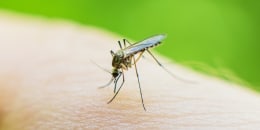
Where is deadly mosquito virus EEE spreading in US? 5 states reporting cases

How to perform pigeon pose — the perfect stretch to do after sitting all day
Numbers, Facts and Trends Shaping Your World
Read our research on:
Full Topic List
Regions & Countries
- Publications
- Our Methods
- Short Reads
- Tools & Resources
Read Our Research On:
Key things to know about U.S. election polling in 2024

Confidence in U.S. public opinion polling was shaken by errors in 2016 and 2020. In both years’ general elections, many polls underestimated the strength of Republican candidates, including Donald Trump. These errors laid bare some real limitations of polling.
In the midterms that followed those elections, polling performed better . But many Americans remain skeptical that it can paint an accurate portrait of the public’s political preferences.
Restoring people’s confidence in polling is an important goal, because robust and independent public polling has a critical role to play in a democratic society. It gathers and publishes information about the well-being of the public and about citizens’ views on major issues. And it provides an important counterweight to people in power, or those seeking power, when they make claims about “what the people want.”
The challenges facing polling are undeniable. In addition to the longstanding issues of rising nonresponse and cost, summer 2024 brought extraordinary events that transformed the presidential race . The good news is that people with deep knowledge of polling are working hard to fix the problems exposed in 2016 and 2020, experimenting with more data sources and interview approaches than ever before. Still, polls are more useful to the public if people have realistic expectations about what surveys can do well – and what they cannot.
With that in mind, here are some key points to know about polling heading into this year’s presidential election.
Probability sampling (or “random sampling”). This refers to a polling method in which survey participants are recruited using random sampling from a database or list that includes nearly everyone in the population. The pollster selects the sample. The survey is not open for anyone who wants to sign up.
Online opt-in polling (or “nonprobability sampling”). These polls are recruited using a variety of methods that are sometimes referred to as “convenience sampling.” Respondents come from a variety of online sources such as ads on social media or search engines, websites offering rewards in exchange for survey participation, or self-enrollment. Unlike surveys with probability samples, people can volunteer to participate in opt-in surveys.
Nonresponse and nonresponse bias. Nonresponse is when someone sampled for a survey does not participate. Nonresponse bias occurs when the pattern of nonresponse leads to error in a poll estimate. For example, college graduates are more likely than those without a degree to participate in surveys, leading to the potential that the share of college graduates in the resulting sample will be too high.
Mode of interview. This refers to the format in which respondents are presented with and respond to survey questions. The most common modes are online, live telephone, text message and paper. Some polls use more than one mode.
Weighting. This is a statistical procedure pollsters perform to make their survey align with the broader population on key characteristics like age, race, etc. For example, if a survey has too many college graduates compared with their share in the population, people without a college degree are “weighted up” to match the proper share.
How are election polls being conducted?
Pollsters are making changes in response to the problems in previous elections. As a result, polling is different today than in 2016. Most U.S. polling organizations that conducted and publicly released national surveys in both 2016 and 2022 (61%) used methods in 2022 that differed from what they used in 2016 . And change has continued since 2022.
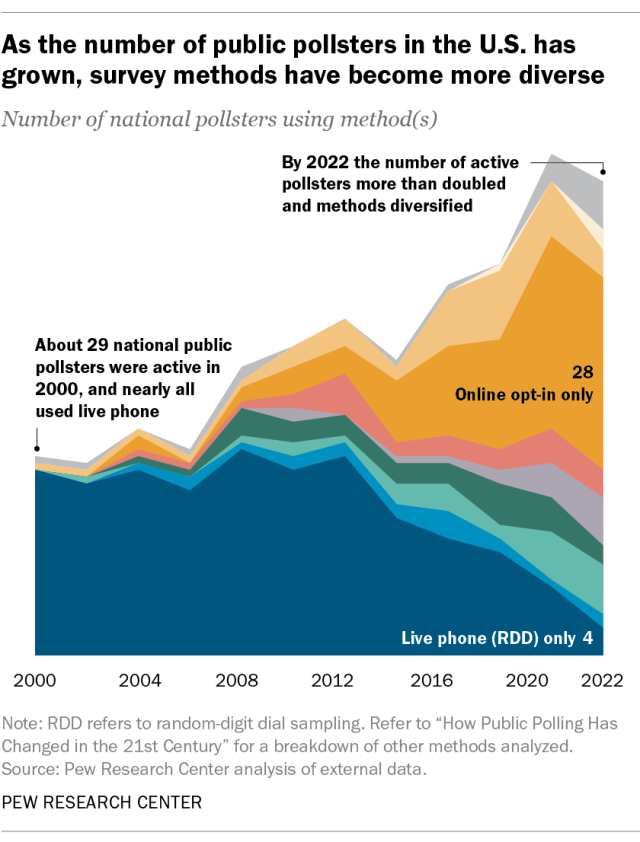
One change is that the number of active polling organizations has grown significantly, indicating that there are fewer barriers to entry into the polling field. The number of organizations that conduct national election polls more than doubled between 2000 and 2022.
This growth has been driven largely by pollsters using inexpensive opt-in sampling methods. But previous Pew Research Center analyses have demonstrated how surveys that use nonprobability sampling may have errors twice as large , on average, as those that use probability sampling.
The second change is that many of the more prominent polling organizations that use probability sampling – including Pew Research Center – have shifted from conducting polls primarily by telephone to using online methods, or some combination of online, mail and telephone. The result is that polling methodologies are far more diverse now than in the past.
(For more about how public opinion polling works, including a chapter on election polls, read our short online course on public opinion polling basics .)
All good polling relies on statistical adjustment called “weighting,” which makes sure that the survey sample aligns with the broader population on key characteristics. Historically, public opinion researchers have adjusted their data using a core set of demographic variables to correct imbalances between the survey sample and the population.
But there is a growing realization among survey researchers that weighting a poll on just a few variables like age, race and gender is insufficient for getting accurate results. Some groups of people – such as older adults and college graduates – are more likely to take surveys, which can lead to errors that are too sizable for a simple three- or four-variable adjustment to work well. Adjusting on more variables produces more accurate results, according to Center studies in 2016 and 2018 .
A number of pollsters have taken this lesson to heart. For example, recent high-quality polls by Gallup and The New York Times/Siena College adjusted on eight and 12 variables, respectively. Our own polls typically adjust on 12 variables . In a perfect world, it wouldn’t be necessary to have that much intervention by the pollster. But the real world of survey research is not perfect.

Predicting who will vote is critical – and difficult. Preelection polls face one crucial challenge that routine opinion polls do not: determining who of the people surveyed will actually cast a ballot.
Roughly a third of eligible Americans do not vote in presidential elections , despite the enormous attention paid to these contests. Determining who will abstain is difficult because people can’t perfectly predict their future behavior – and because many people feel social pressure to say they’ll vote even if it’s unlikely.
No one knows the profile of voters ahead of Election Day. We can’t know for sure whether young people will turn out in greater numbers than usual, or whether key racial or ethnic groups will do so. This means pollsters are left to make educated guesses about turnout, often using a mix of historical data and current measures of voting enthusiasm. This is very different from routine opinion polls, which mostly do not ask about people’s future intentions.
When major news breaks, a poll’s timing can matter. Public opinion on most issues is remarkably stable, so you don’t necessarily need a recent poll about an issue to get a sense of what people think about it. But dramatic events can and do change public opinion , especially when people are first learning about a new topic. For example, polls this summer saw notable changes in voter attitudes following Joe Biden’s withdrawal from the presidential race. Polls taken immediately after a major event may pick up a shift in public opinion, but those shifts are sometimes short-lived. Polls fielded weeks or months later are what allow us to see whether an event has had a long-term impact on the public’s psyche.
How accurate are polls?
The answer to this question depends on what you want polls to do. Polls are used for all kinds of purposes in addition to showing who’s ahead and who’s behind in a campaign. Fair or not, however, the accuracy of election polling is usually judged by how closely the polls matched the outcome of the election.
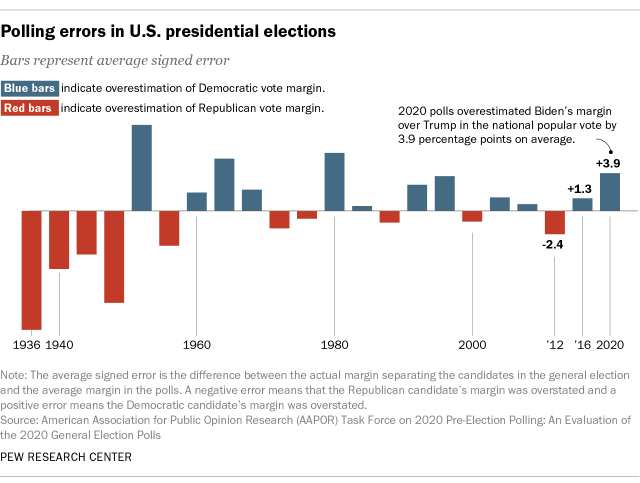
By this standard, polling in 2016 and 2020 performed poorly. In both years, state polling was characterized by serious errors. National polling did reasonably well in 2016 but faltered in 2020.
In 2020, a post-election review of polling by the American Association for Public Opinion Research (AAPOR) found that “the 2020 polls featured polling error of an unusual magnitude: It was the highest in 40 years for the national popular vote and the highest in at least 20 years for state-level estimates of the vote in presidential, senatorial, and gubernatorial contests.”
How big were the errors? Polls conducted in the last two weeks before the election suggested that Biden’s margin over Trump was nearly twice as large as it ended up being in the final national vote tally.
Errors of this size make it difficult to be confident about who is leading if the election is closely contested, as many U.S. elections are .
Pollsters are rightly working to improve the accuracy of their polls. But even an error of 4 or 5 percentage points isn’t too concerning if the purpose of the poll is to describe whether the public has favorable or unfavorable opinions about candidates , or to show which issues matter to which voters. And on questions that gauge where people stand on issues, we usually want to know broadly where the public stands. We don’t necessarily need to know the precise share of Americans who say, for example, that climate change is mostly caused by human activity. Even judged by its performance in recent elections, polling can still provide a faithful picture of public sentiment on the important issues of the day.
The 2022 midterms saw generally accurate polling, despite a wave of partisan polls predicting a broad Republican victory. In fact, FiveThirtyEight found that “polls were more accurate in 2022 than in any cycle since at least 1998, with almost no bias toward either party.” Moreover, a handful of contrarian polls that predicted a 2022 “red wave” largely washed out when the votes were tallied. In sum, if we focus on polling in the most recent national election, there’s plenty of reason to be encouraged.
Compared with other elections in the past 20 years, polls have been less accurate when Donald Trump is on the ballot. Preelection surveys suffered from large errors – especially at the state level – in 2016 and 2020, when Trump was standing for election. But they performed reasonably well in the 2018 and 2022 midterms, when he was not.
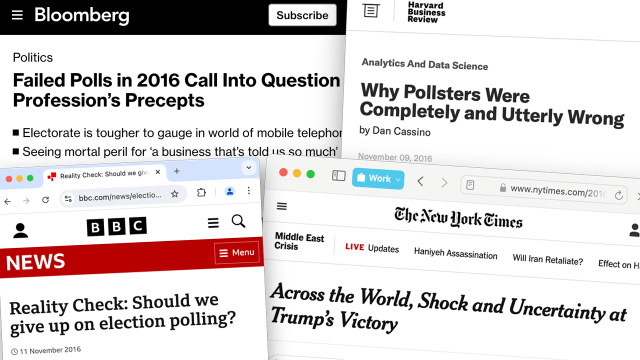
During the 2016 campaign, observers speculated about the possibility that Trump supporters might be less willing to express their support to a pollster – a phenomenon sometimes described as the “shy Trump effect.” But a committee of polling experts evaluated five different tests of the “shy Trump” theory and turned up little to no evidence for each one . Later, Pew Research Center and, in a separate test, a researcher from Yale also found little to no evidence in support of the claim.
Instead, two other explanations are more likely. One is about the difficulty of estimating who will turn out to vote. Research has found that Trump is popular among people who tend to sit out midterms but turn out for him in presidential election years. Since pollsters often use past turnout to predict who will vote, it can be difficult to anticipate when irregular voters will actually show up.
The other explanation is that Republicans in the Trump era have become a little less likely than Democrats to participate in polls . Pollsters call this “partisan nonresponse bias.” Surprisingly, polls historically have not shown any particular pattern of favoring one side or the other. The errors that favored Democratic candidates in the past eight years may be a result of the growth of political polarization, along with declining trust among conservatives in news organizations and other institutions that conduct polls.
Whatever the cause, the fact that Trump is again the nominee of the Republican Party means that pollsters must be especially careful to make sure all segments of the population are properly represented in surveys.
The real margin of error is often about double the one reported. A typical election poll sample of about 1,000 people has a margin of sampling error that’s about plus or minus 3 percentage points. That number expresses the uncertainty that results from taking a sample of the population rather than interviewing everyone . Random samples are likely to differ a little from the population just by chance, in the same way that the quality of your hand in a card game varies from one deal to the next.
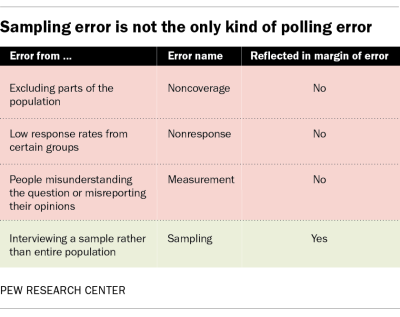
The problem is that sampling error is not the only kind of error that affects a poll. Those other kinds of error, in fact, can be as large or larger than sampling error. Consequently, the reported margin of error can lead people to think that polls are more accurate than they really are.
There are three other, equally important sources of error in polling: noncoverage error , where not all the target population has a chance of being sampled; nonresponse error, where certain groups of people may be less likely to participate; and measurement error, where people may not properly understand the questions or misreport their opinions. Not only does the margin of error fail to account for those other sources of potential error, putting a number only on sampling error implies to the public that other kinds of error do not exist.
Several recent studies show that the average total error in a poll estimate may be closer to twice as large as that implied by a typical margin of sampling error. This hidden error underscores the fact that polls may not be precise enough to call the winner in a close election.
Other important things to remember
Transparency in how a poll was conducted is associated with better accuracy . The polling industry has several platforms and initiatives aimed at promoting transparency in survey methodology. These include AAPOR’s transparency initiative and the Roper Center archive . Polling organizations that participate in these organizations have less error, on average, than those that don’t participate, an analysis by FiveThirtyEight found .
Participation in these transparency efforts does not guarantee that a poll is rigorous, but it is undoubtedly a positive signal. Transparency in polling means disclosing essential information, including the poll’s sponsor, the data collection firm, where and how participants were selected, modes of interview, field dates, sample size, question wording, and weighting procedures.
There is evidence that when the public is told that a candidate is extremely likely to win, some people may be less likely to vote . Following the 2016 election, many people wondered whether the pervasive forecasts that seemed to all but guarantee a Hillary Clinton victory – two modelers put her chances at 99% – led some would-be voters to conclude that the race was effectively over and that their vote would not make a difference. There is scientific research to back up that claim: A team of researchers found experimental evidence that when people have high confidence that one candidate will win, they are less likely to vote. This helps explain why some polling analysts say elections should be covered using traditional polling estimates and margins of error rather than speculative win probabilities (also known as “probabilistic forecasts”).
National polls tell us what the entire public thinks about the presidential candidates, but the outcome of the election is determined state by state in the Electoral College . The 2000 and 2016 presidential elections demonstrated a difficult truth: The candidate with the largest share of support among all voters in the United States sometimes loses the election. In those two elections, the national popular vote winners (Al Gore and Hillary Clinton) lost the election in the Electoral College (to George W. Bush and Donald Trump). In recent years, analysts have shown that Republican candidates do somewhat better in the Electoral College than in the popular vote because every state gets three electoral votes regardless of population – and many less-populated states are rural and more Republican.
For some, this raises the question: What is the use of national polls if they don’t tell us who is likely to win the presidency? In fact, national polls try to gauge the opinions of all Americans, regardless of whether they live in a battleground state like Pennsylvania, a reliably red state like Idaho or a reliably blue state like Rhode Island. In short, national polls tell us what the entire citizenry is thinking. Polls that focus only on the competitive states run the risk of giving too little attention to the needs and views of the vast majority of Americans who live in uncompetitive states – about 80%.
Fortunately, this is not how most pollsters view the world . As the noted political scientist Sidney Verba explained, “Surveys produce just what democracy is supposed to produce – equal representation of all citizens.”
- Survey Methods
- Trust, Facts & Democracy
- Voter Files

Scott Keeter is a senior survey advisor at Pew Research Center .

Courtney Kennedy is Vice President of Methods and Innovation at Pew Research Center .
How do people in the U.S. take Pew Research Center surveys, anyway?
How public polling has changed in the 21st century, what 2020’s election poll errors tell us about the accuracy of issue polling, a field guide to polling: election 2020 edition, methods 101: how is polling done around the world, most popular.
901 E St. NW, Suite 300 Washington, DC 20004 USA (+1) 202-419-4300 | Main (+1) 202-857-8562 | Fax (+1) 202-419-4372 | Media Inquiries
Research Topics
- Email Newsletters
ABOUT PEW RESEARCH CENTER Pew Research Center is a nonpartisan fact tank that informs the public about the issues, attitudes and trends shaping the world. It conducts public opinion polling, demographic research, media content analysis and other empirical social science research. Pew Research Center does not take policy positions. It is a subsidiary of The Pew Charitable Trusts .
© 2024 Pew Research Center

IMAGES
VIDEO
COMMENTS
Genetic testing is a type of health program that involves the identification of any changes in genes, chromosomes, and proteins. Here are 12 Pros and Cons of Genetic Testing. Find out what is, why it is needed, how the genetic testing is done, advantages & disadvantages of it and how accurate it can be before taking.
Several companies promote at-home genetic testing to uncover a range of potential health problems (and, in some cases, ancestry traits). Just how useful is this and how do such tests differ from genetic testing a doctor may recommend for medical reasons?
Read about the pros and genetic testing and some of the negatives of genetic testing, and how genetic screening tests assist in understanding disease risks.
Get a custom essay on Genetic Testing: Advantages and Disadvantages. At the same time, I acknowledge all the benefits that genetic testing can bring in terms of diagnosing a wide range of diseases and conditions. Fearing that they might discover hereditary predispositions to some untreatable diseases, many people choose not to get tested.
Get a balanced view on genetic testing with our in-depth look, at its pros and cons. From life-saving information to privacy concerns, we cover it all.
Genetic testing involves examining your DNA, the chemical database that carries instructions for your body's functions. Genetic testing can reveal changes (mutations) in your genes that may cause illness or disease. Although genetic testing can provide important information for diagnosing, treating and preventing illness, there are limitations.
At-home genetic tests have both benefits and risks and are different than tests done by a doctor. Learn the pros and cons of direct-to-consumer testing.
Abstract Advances in the field of human genetics over the past three decades have led to improvements in human health through development and availability of novel genetic testing approaches for diagnosis, prognosis, treatment therapy, safety, preventive screening and population-based risk assessment.
Different and a lots of genetic tests are used today, and more are being developed. (5) Genetic testing can be used in a lots and very many situations. The aim of the testing most often used to check if you have cancer is called predictive gene testing. It's used to look for gene changes that might put a person at risk of getting a disease. It's usually done in people that have history of ...
The Pros and Cons of Genetic Testing A $99 at-home test can detail our genome profile and assess our risk of contracting disease. But is that good news or bad news? By Rita Rubin | April 9, 2013 ...
Genetic testing is usually conducted by a medical professional, such as a genetic counselor, though that isn't the case anymore. Direct-to-consumer genetic testing, which is offered by several different companies, doesn't require any sort of medical professional and can be performed by a single person.
As home genetic testing continues to boom, more people are getting their DNA tested for health reasons. The tests may signal future disease, but there are many limitations that might falsely reassure.
The topic that I have chosen to write this essay on is genetic testing and whether it is considered ethical or unethical. The medical definition of genetic testing is as follows; "Genetic testing involves examining your DNA, which is the chemical database that carries instructions for your body's functions.
My current opinion is that despite the many advantages of genetic testing, the disadvantages still outweigh them. I feel this way for a variety of reasons: 1) Preimplantation Genetic Diagnosis is eerily similar eugenics; 2) Discrimination may occur as a result of the information provided by genetic testing; 3) Abnormal results may cause ...
The Pros and Cons of Genetic Testing. In 2003, the Human Genome Project was completed. The project was an international research effort whose ultimate goal was to sequence the human genome and identify its genes. Upon completion, the Human Genome Project provided a complete sequence of the nearly 3 billion base pairs in the human genome.
Pros And Cons Of Genetic Testing Essay. 1. The concerns Tonya and Lisa have regarding genetic testing raises several ethical questions that Dugas (2005) outlines. The right to self-determination is central in matters linked to genetic testing, and nurses do need to understand their role in providing informed consent when patients are faced with ...
The downside of genetic screening. There is universal screening, sub-population screening and targeted screening. There is screening of embryos, newborns and those within a specific age range. There is screening of people according to their weight, race or family history. There is screening for HIV, genetic abnormalities, various cancers and ...
Prenatal genetic testing provides more information about the fetus. And people undergoing in vitro fertilization can opt to screen embryos for many genetic conditions and traits, deciding which to implant based on the results. ... "Your argument was flawed here" and we can improve the discourse by exploring the pros and cons. The key to ...
While genetic testing can provide valuable information for individuals with known family history of cancers or other diseases, the pros and cons for the tests need to be carefully weighed, the information shared wisely and carefully protected.
Explore this Genetic Testing Pros And Cons essay sample that stands as a paragon of quality. Delve into this expertly written essay to get inspiration.
Pros And Cons Of Genetic Testing Essay Genetic testing…The Way of The Future What are the implications for this new technology Genetic testing, aka DNA testing, allows doctors to check if there are any possibilities to inherit diseases, and can also be used to determine a persons ancestry or biological relationship between people.
How to Start Writing a Law School Essay To get started on a personal statement, brainstorm your best stories and don't stunt the writing process. Gabriel Kuris Aug. 5, 2024
Vice President Kamala Harris, the Democratic presidential nominee, has warned Americans about "Trump's Project 2025" agenda — even though former President Donald Trump doesn't claim the ...
A genetic disorder is a genetic problem caused by one or more abnormalities in the genome. A genetic disorder is also a inherited disorder. The science of genetics was born with the experiments of Gregor Mendel, a nineteenth century austrian monk who studied inheritance patterns. The most common genetic disorder is Cystic Fibrosis, which ...
A blood test may someday help determine a person's risk for long COVID, new research suggests. ... Essay / Updated Aug. 30 ... The pros, the cons and a shopping list.
Confidence in U.S. public opinion polling was shaken by errors in 2016 and 2020. In both years' general elections, many polls underestimated the strength of Republican candidates, including Donald Trump. These errors laid bare some real limitations of polling. In the midterms that followed those ...
We must be mindful that some disadvantage of genetic testing can potentially be harmful because of inappropriate test utilization, misinterpretation of test results, and lack of follow-up and other adverse consequences. Genetic testing has advantage benefits whether the results are positive or negative for a gene mutation.